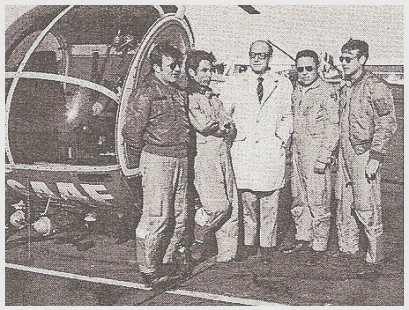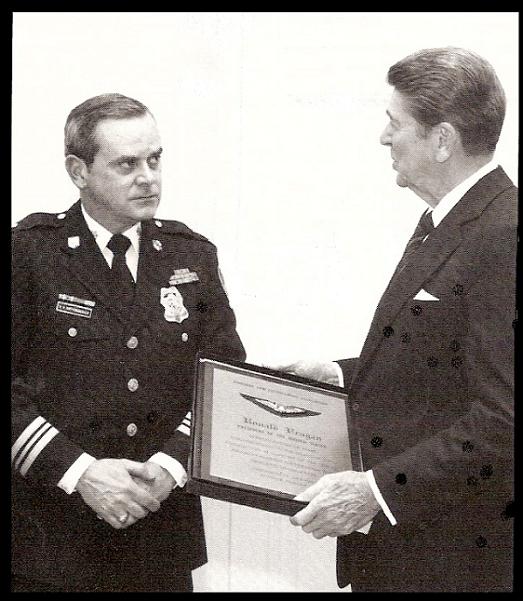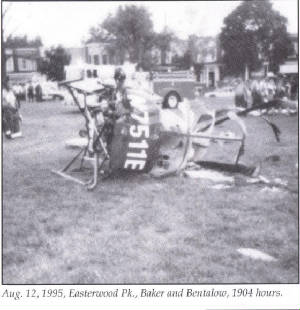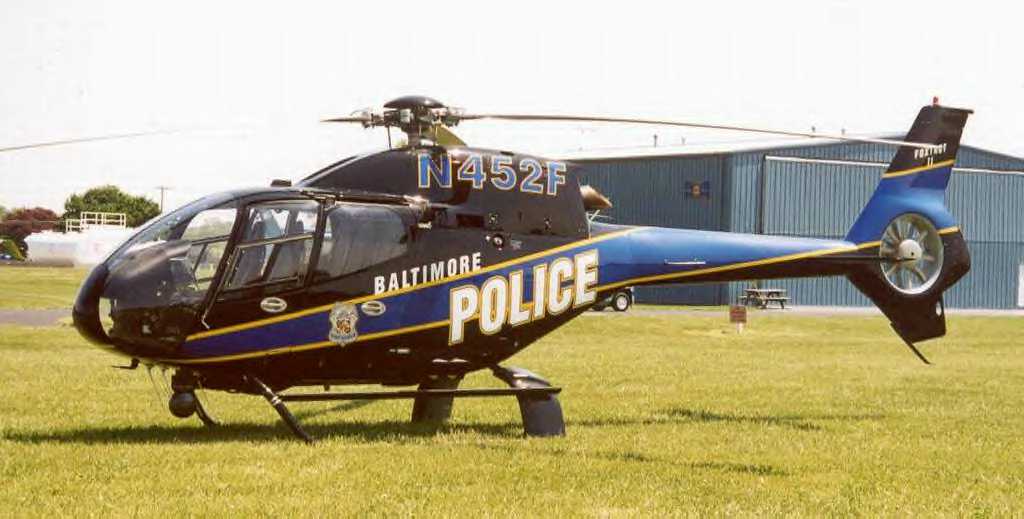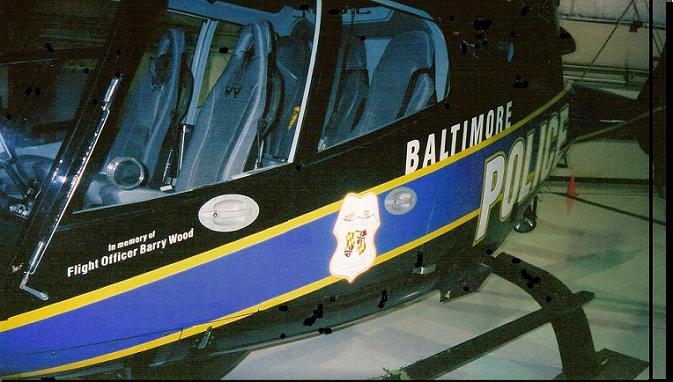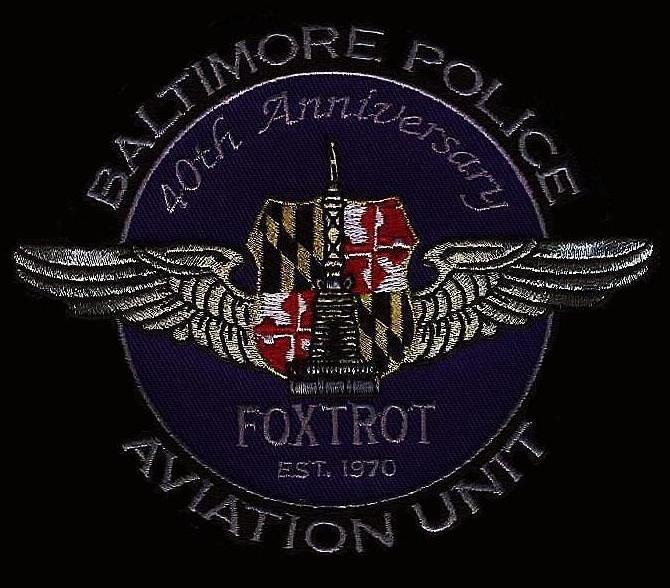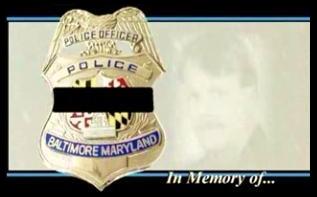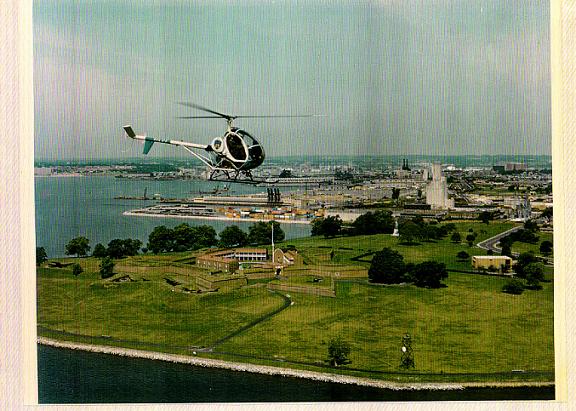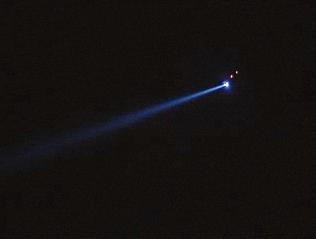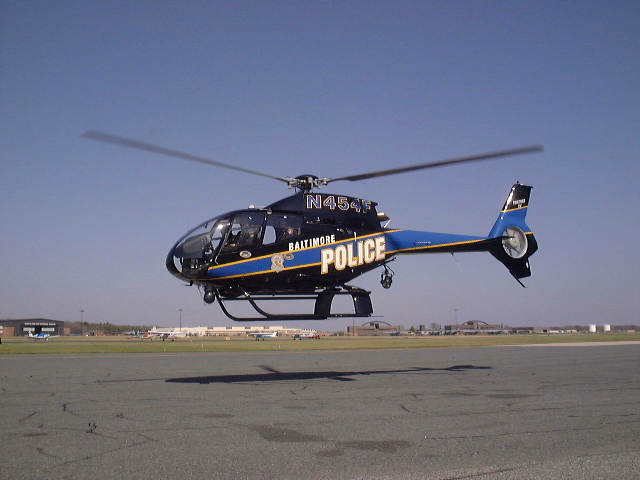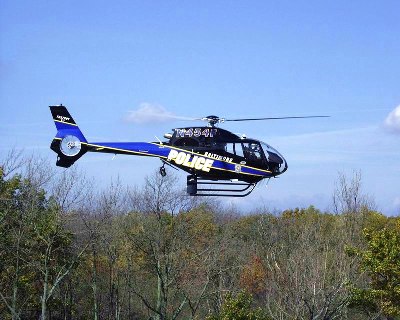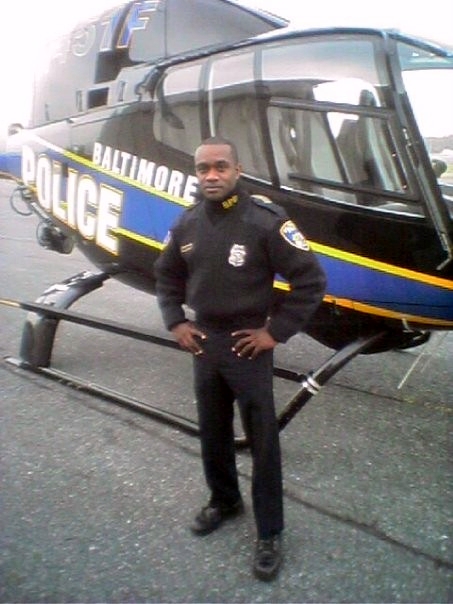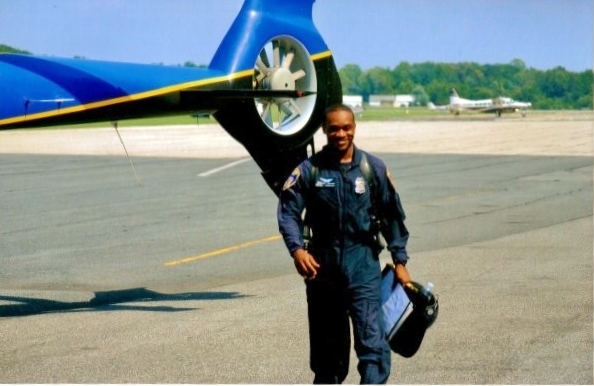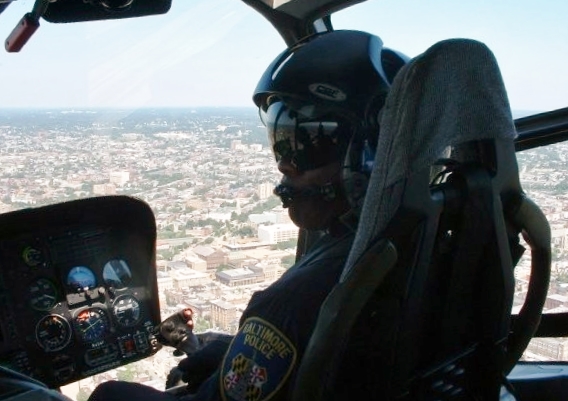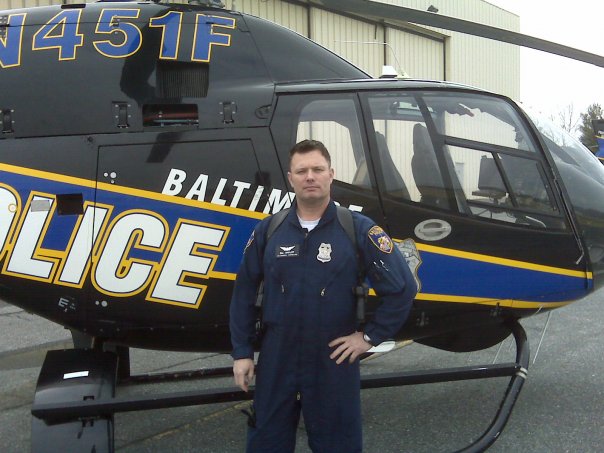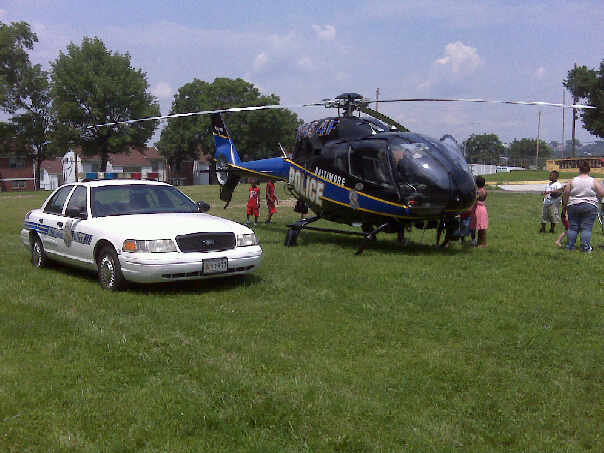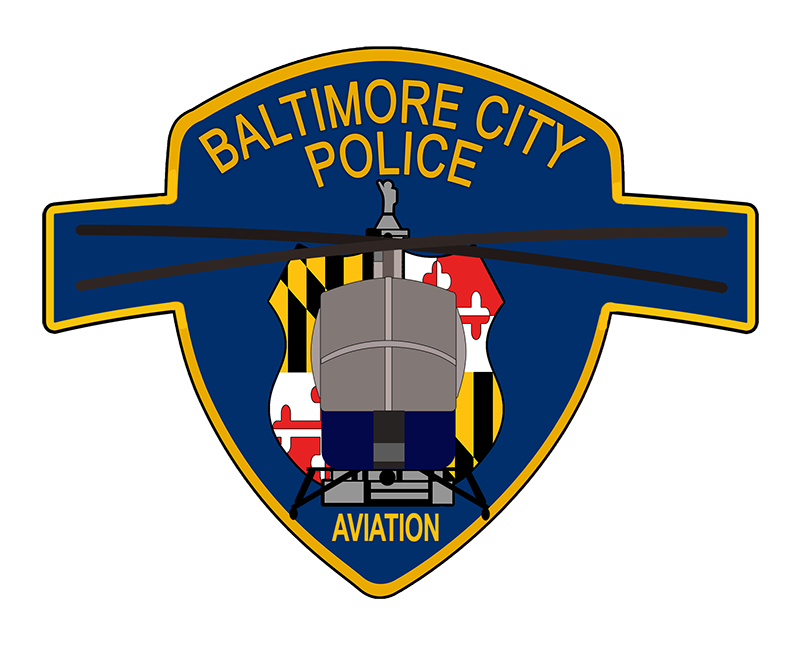 Aviation Unit
Aviation Unit
Helicopter Patrol Begins In Baltimore
October 23, 1970
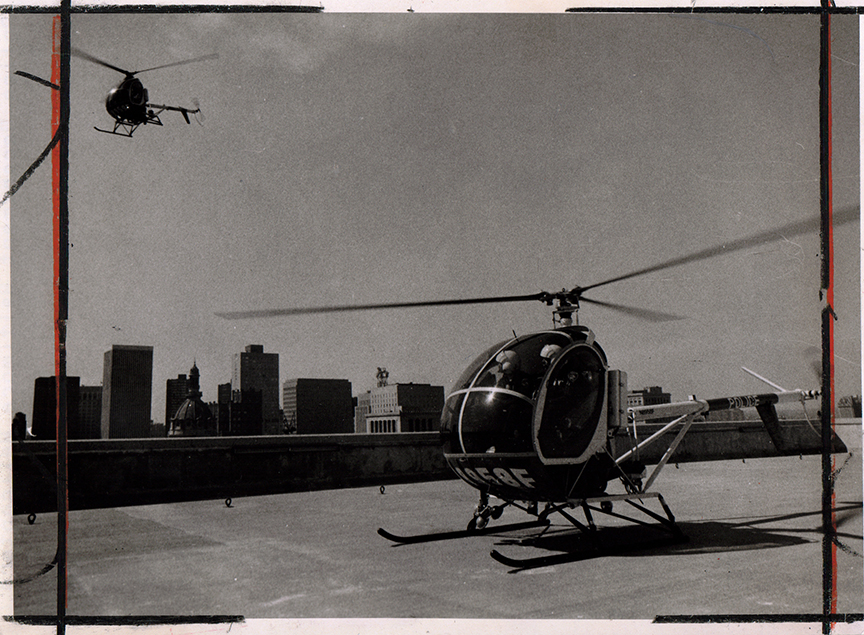
Courtesy Mark Frank

The First Flight of the new Aviation unit took place on 2 July 2001
Eurocopter EC-120B

Made by and provided courtesy of Jim Derreth
For more information check out Jim's Facebook page HERE
or by clicking on the above model picture

Baltimore Police
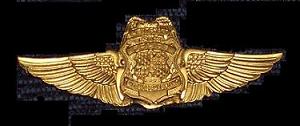
BALTIMORE POLICE HELICOPTER UNIT


 Click on the article above to see full size article
Click on the article above to see full size article
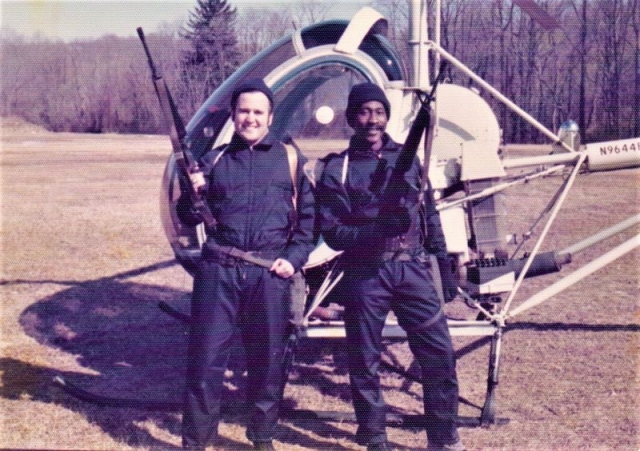 Sgt Ed Shillo
Sgt Ed Shillo
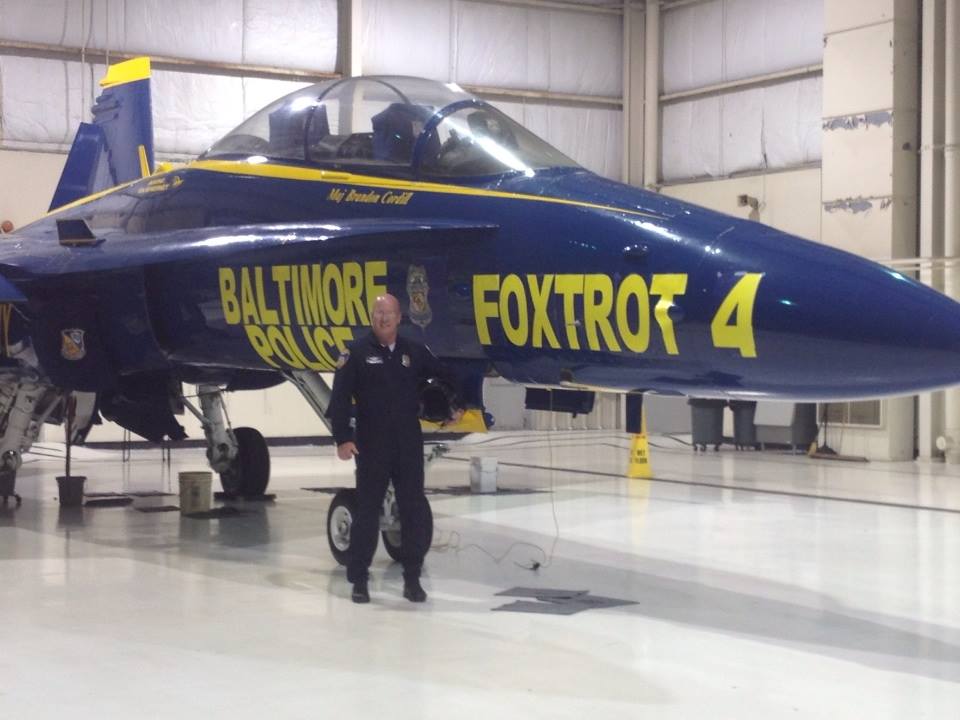 Star Spangled Banner 2014
Star Spangled Banner 2014
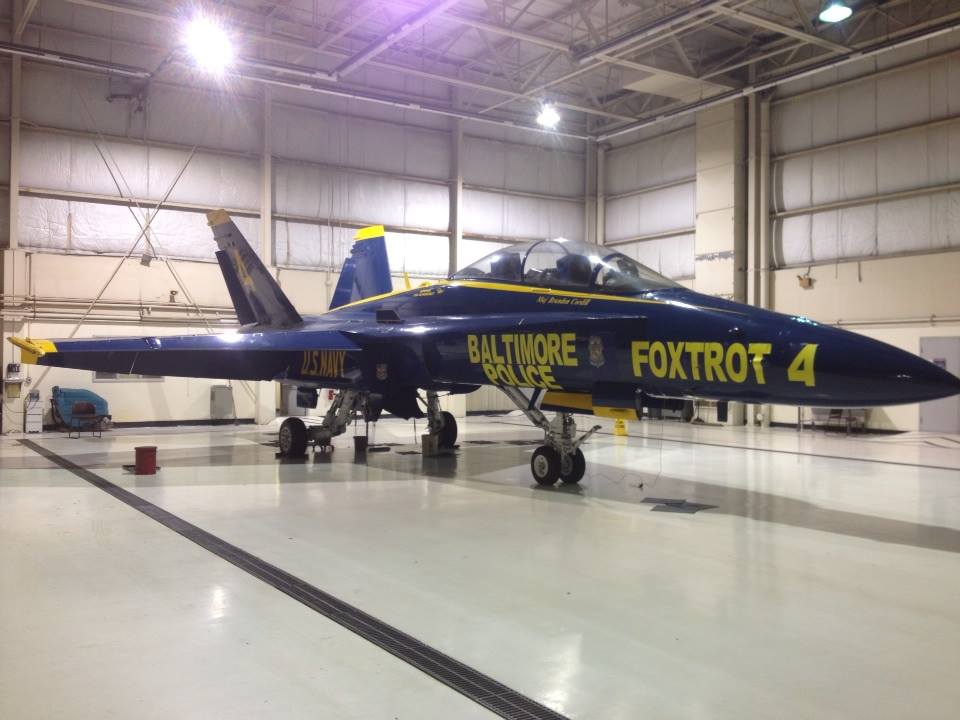 Star Spangled Banner 2014
Star Spangled Banner 2014
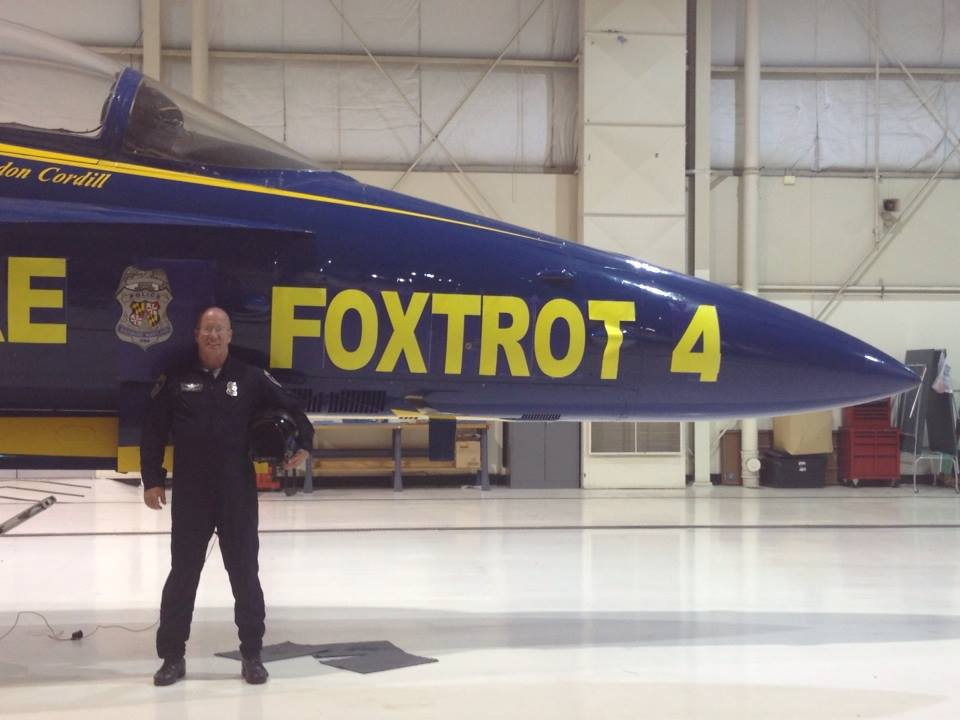 Star Spangled Banner 2014
Star Spangled Banner 2014
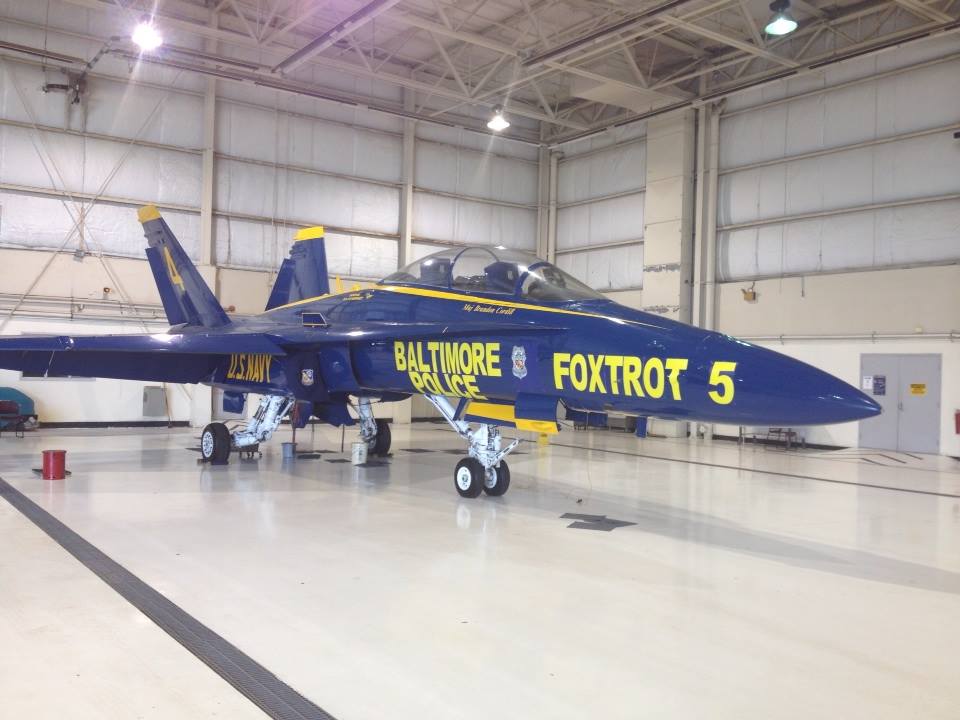 Star Spangled Banner 2014
Star Spangled Banner 2014

Courtesy Ret. Bob Wilson

Courtesy Ret. Bob Wilson
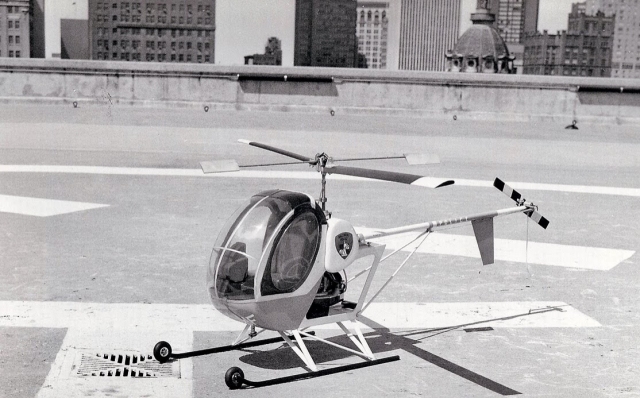 Courtesy Ret. Bob Wilson
Courtesy Ret. Bob Wilson
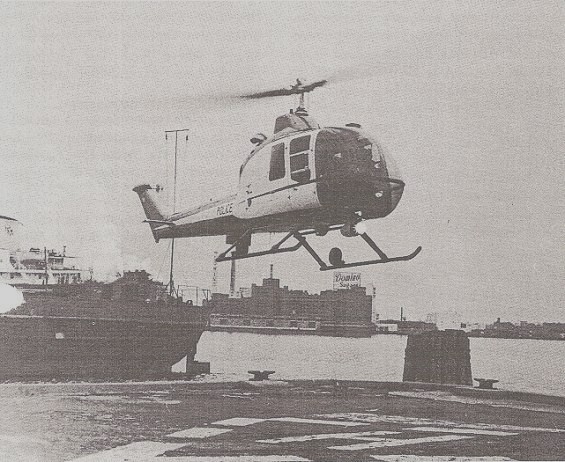
BPD NEWSLETTER
23 Oct 1970
The Department's new helicopter demonstrates its maneuverability October 23, 1970, marked the appearance of a new police tool for the Baltimore Police Department. After many months of planning and researching, a light observation helicopter was officially placed in service by this Department. Availing itself of a Federal grant, the BPD purchased an FH 1100 helicopter. Assembled by the Fairchild Hiller Aircraft Co., Inc., Hagerstown, Md_, the "chopper" met standard requirements and specifications for its service to the City of Baltimore. Special equipment was installed for the unique Departmental "vehicle" a hoist with a lifting capacity of 300 pounds, a 3.5 million candlepower spotlight, a combination siren/public address system, and a "police communications network." Officials involved in the original planning of helicopter use were admittedly awaiting with anticipation the inception of this aid to municipal law enforcement. And now that helicopter patrol is a reality, the five men assigned to that unit have inherited this feeling of anticipation, and even excitement.

Roger Miller took this photo
Officer Robert Foltz and Flight Officer Douglas Womack
in Foxtrot for his 1983 book Baltimore A Portrait
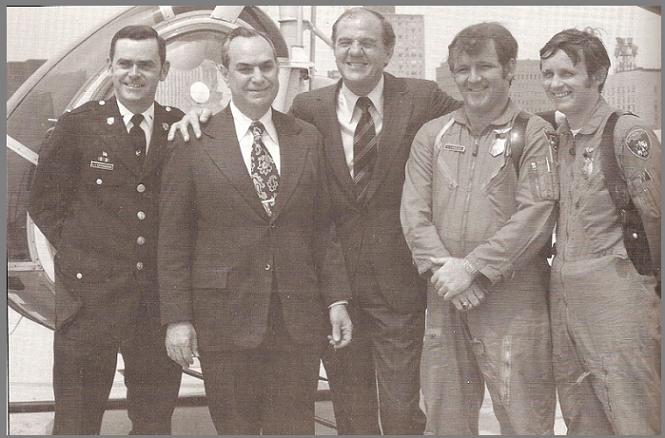
Sun Paper Photo
1971 Early BPD Aviation Helicopter
15 January 1971
Officer-in-Charge, Sergeant Regis Raffensberger, 31 years of age with 10 years in the Department explains it this way, "As an aerial platform, the helicopter has tremendous potential and capability as an instrument to support law enforcement efforts. We are anxiously looking forward to exploring and implementing this capacity to assist in combating crime in Baltimore."The two pilots, Officers Henry Lippincott and R. Scott Miskimon, were appointed to the Department in 1970 and have a total of 4,400 hours of helicopter flight time between them prior to their police assignment, which filled the need for highly competent pilots who are police trained. The two aerial observers, Officers John Rourke and Weston Bousman have 6 and 7 years police experience with the BPD, respectively. These officers were chosen because, in an effort to achieve the goal of combating crime through enhancing the apprehension/suppression capability of the Department, they qualified as aerial on servers who are policy-oriented and experienced. Members Can Feel Proud However, every member of the Baltimore Police Department can feel justly proud of this pioneering step in modern law enforcement, since the BPD is only the second east coast department to use helicopters in its patrol efforts. An example of the effectiveness of helicopter patrol surfaced on Friday, January 15, 1971, when a Northwestern District patrol unit was assisted in the apprehension of a burglary suspect by information supplied by the hovering police craft. Using radio communications between the helicopter and the ground unit, the helicopter crew provided a very accurate and prompt description of the suspect leading to his capture. Effectiveness is the key word when discussing the helicopter. With a cruising speed of 0 to 127 MPH, maximum weight of 2,750 lbs. - fully loaded, and a capacity of 5 passengers (including the crew), an active imagination can visualize the use of a helicopter in pursuits, preventive patrol, immediate description broadcasts, coordinating ground unit response efforts, and other operational aspects. Logistical Support Currently, the helicopter receives logistical support from Friendship International Airport. The maximum flight time is 2 1/2 hours between refueling which are accomplished by a return time of just 5 minutes to its fueling location. Rapid response is a most important capability of this new tool and the 3 1/2 minute response time in a recent time test from the Northwestern District to the Southeastern District is evidence of the response/flying quickness of our flying machine. With an air intake device known as the "Snow Kit" the copter can be flown even in poor weather, however, minimum weather requirements are three miles of visibility and a 1000 foot ceiling. While weather limits the ability to respond, once the "go-no-go" decision is made, response time is basically unaffected.
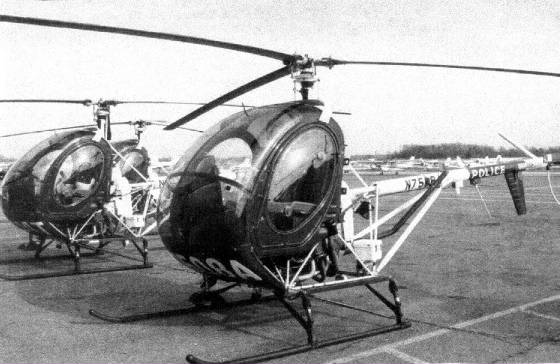
Helicopter Use Evaluated
Since that October date, the Department has taken great care to evaluate helicopter use in this City. As a result of this evaluation, two additional helicopters are on order. These smaller Hughes 300 C machines are scheduled for delivery in late March. They are three places (seat) helicopters with lights and P / A system, but no hoist; and are in the 1900 lbs. class of aerial machines. Funded through a Federal grant, the arrival of the two new helicopters will permit the Department to intensify aerial patrol of the City substantially and eventually to have a helicopter on alert status at all times with ranging degrees of response time. Current planning is to fly about 3200 hours per year for all aircraft combined. Whatever the weather and whatever the time of day, the citizens of Baltimore will be assured of greater safety with the Department's helicopter(s) on patrol.

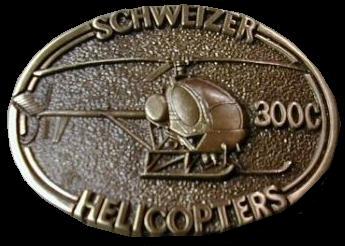
First Cross-Country Flight
7 April 1971
Two new versatile crime-fighting tools touched down at Friendship Airport Wednesday, April 7, 1971, piloted by Baltimore Police Department Flight Officers James Vincent Daly, Hank Lippincott, and Scott Miskimmon. The Hughes 300-C Helicopters ended a cross-country flight that had begun from Palomar Airport in California seven days earlier. The flight, a first for the Department, was accomplished under the supervision and direction of Fiscal Affairs Division Director C. Jared Glauser and was accompanied by the Department's newest helicopter pilot, Flight Officer James Vincent Daly. The trip climaxed many weeks of intensive preparation prior to the actual acceptance of the new helicopters from the Hughes Tool Company, located in Culver City, California. By taking delivery of the machines on the West Coast, the Flight Officers were able to take advantage of orientation and familiarization periods offered by Hughes engineers and test pilots. In addition, the Officers were able to observe, first-hand, the assembly of the helicopters for valuable future reference. The Baltimore Police Department contingent arrived in California on March 23, 1971, and spent their first day with the Los Angeles Police Department, since that Department has employed helicopters for over five years and possesses invaluable experience in the techniques of helicopter employment in police work. The new acquisitions were formally accepted and registered for the Department on March 26, 1971, During the next several days the Flight Officers received transitional flight instructions from Hughes Company test pilots who familiarized them with the new craft. At the termination of the three day orientation period, the Officers were certified to fly the 300-C model. On the first of April, the crews were ready to begin the return transcontinental trip. Due to a heavy fog which blanketed the area, the departure was delayed almost three hours. Further, because of extremely turbulent winds over the mountains, the route for the first leg was modified. The planned route for the return trip was through the southern section of the country to avoid adverse weather and high mountainous terrain farther to the north. This route would cover approximately three thousand miles and necessitate a projected figure of forty-two hours flying time.
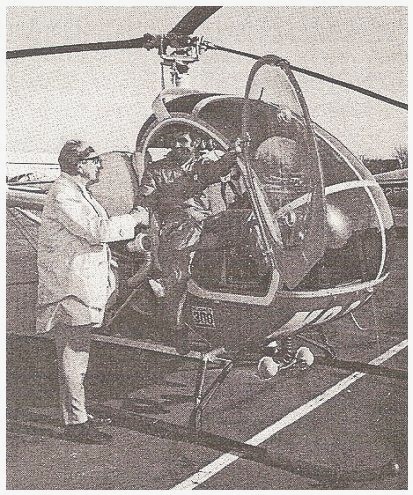
Commissioner Donald D. Pomerleau extends a welcome home to Director C. Jared Glauser The largest physical obstacle to be crossed were the San Jacinto Mountains. Altitudes during crossing varied from five hundred to two thousand feet above the terrain to a maximum of 6500 feet during the crossing with a cruising speed averaging eighty-five miles an hour. With the exception of fuel stops, made every 1 hour and 40 minutes, the pilots flew continuously from 8: 00 A.M. until 6: 00 or 7: 00 P.M. Using landmarks, major highways and pipelines as guides, the crews averaged five hundred miles each day. Overnight stops were made in Tucson, Arizona; Pecos, Texas; Shreveport, Louisiana, and Birmingham, Alabama. For the most part, flying conditions were ideal until the final stop prior to reaching Friendship Airport. In Greensboro, North Carolina, the helicopters were delayed because of snow, nevertheless reaching Baltimore a single day behind the projected schedule.

Touchdown of the two craft was made at precisely 4: 17 P.M. on the 7th. Commissioner Donald D. Pomerleau personally greeted Director Glauser and the crew members, congratulating them on the success of their flight. In company with the Flight Officers, the Commissioner inspected the Department's newest crime-fighting apparatus.
(From Left) Flight Officer Scott Miskimmon, Director C. Jared Glauser, Commissioner Donald D. Pomerleau, and Flight Officers Hank Lippincott and James Vincent Daly
Equipped with fuel-injection engines the Hughes 300-C helicopters are capable of a maximum airspeed of 105 miles per hour. Each is equipped with a powerful set of searchlights rated at 1.2 million candlepower. Both. are equipped with a siren, public address system, and police radio.
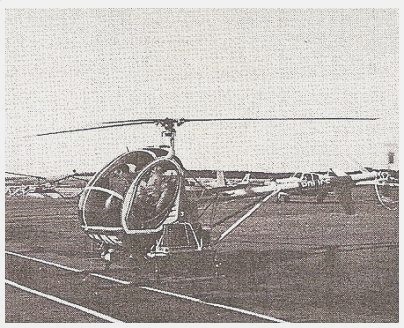
The two new helicopters raise to three the number of such craft available for tactical deployment in the Department's continuing efforts to combat crime. Purchased under a Federal grant, the Hughes 300-C models represent a maximum combination of utility and modernization within the Baltimore Police Department crime-fighting efforts.

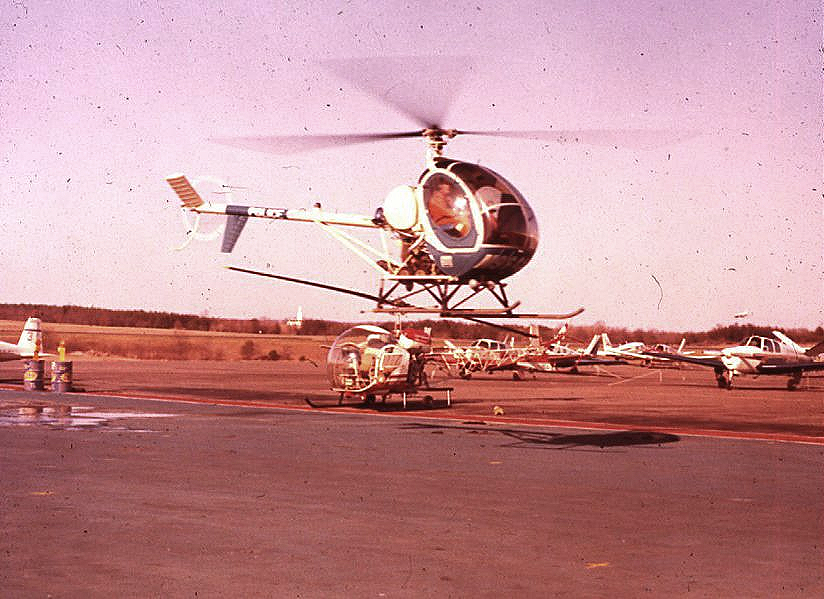





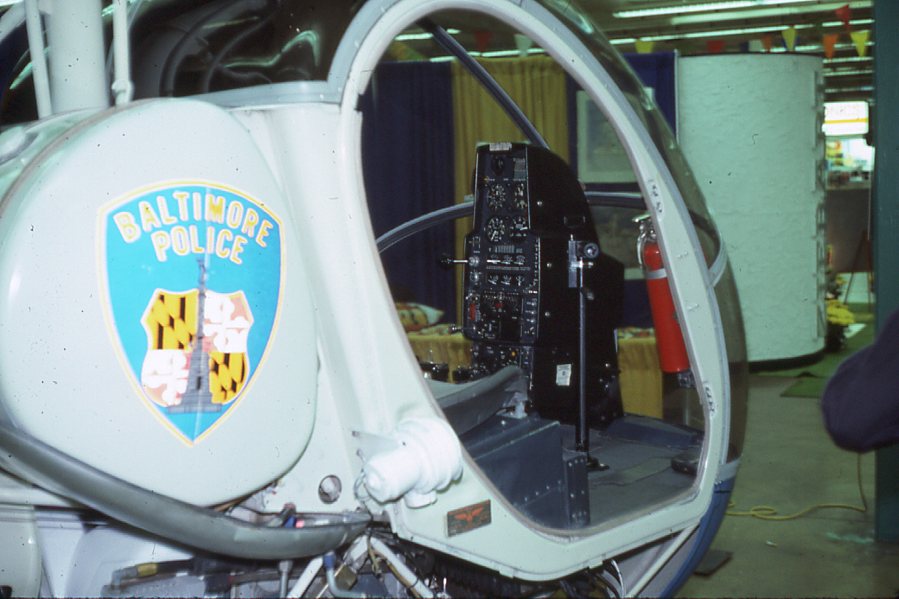
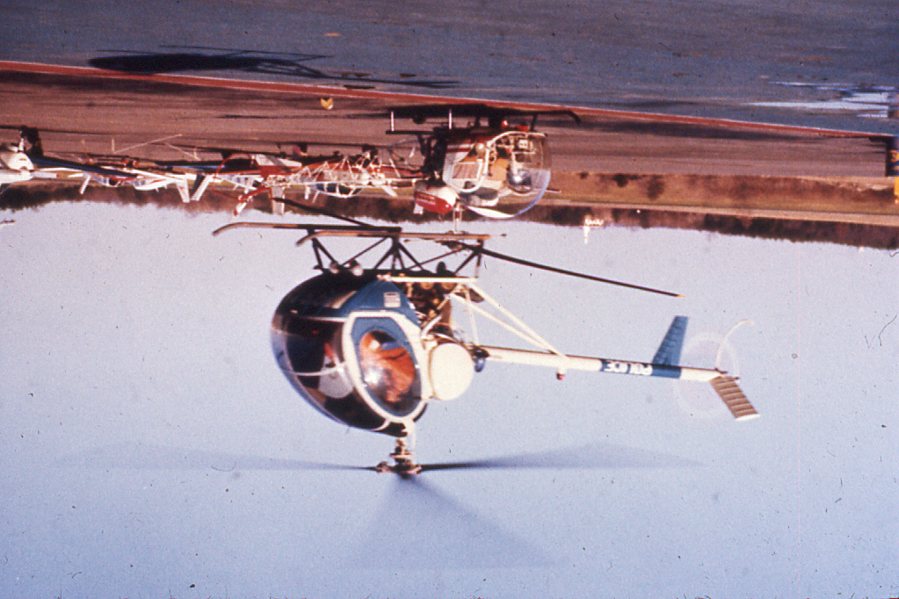
The Fairchild-Hiller Helicopter
15 April 1971
During a two week experimental period the Fairchild-Hiller Helicopter has demonstrated itself to be a very effective crime-fighting tool. With a total of 150 flying hours on patrol, the Helicopter Unit has been instrumental in arrests for assault and robbery, burglary, escapees and stolen autos.
On April 15, 1971, the first day airborne one of the Hughes Helicopters gave an indication of its crime-fighting potential, by assisting in the apprehension of three suspects in an assault and robbery case in the Northeastern District.
At the time of the call, the helicopters were on a communications test flight over the Northwestern District. The Hughes, in company with the Fairchild-Hiller, responded to the scene of the offense within 1 1/2 minutes and pointed out a suspect to radio cars which affected the arrest on the ground. Several hours later two more suspects fitting the description for the assault and robbery were sighted in a nearby commercial area, but because of heavy traffic congestion, the radio car that sighted the suspects could not make the arrest. Again the helicopter responded in time to see the suspects enter a store, and broadcast their description to ground units which made the arrests.


Fighting Crime From 500 Feet
June 1971
It was a Saturday afternoon. The two youthful burglars had managed to force their way into a window of a Baltimore City Junior High School. The simplest part lay before them, to exit the building with their stolen property; undetected. But on that particular Saturday something went wrong. Upon leaving the school, the youths found themselves between converging patrol cars. In panic, each fled a different direction with Tactical and District officers close behind. After a time, the burglars outdistanced the Police Officers. Within a few minutes both were safely out of the area. Realizing that their description would be broadcast over the Police radio, both boys shed their distinctively colored jackets, then mingled in a group of young people blocks away from the location of the burglary. Both were confident of their anonymity. Their confidence was of short duration. Without hesitation two Officers approached the standing group, immediately identified the suspects and took them into custody. It was not guesswork on the part of the arresting Officers. Though they could not have observed the escape or its destination, a helicopter hovering five hundred feet above the scene had distinctly observed the entire incident and relayed the information to ground units. The incident illuminates the progress made by the Helicopter Unit in its Aerial Patrol procedures. The following article is a commentary on that progress. From 500 feet, Baltimore's appearance is radically altered and even fundamental considerations such as direction and location require a new, basic attention to the city's landmarks. Rows of homes stretch seemingly to the horizon, hampering instant identification of streets and businesses. To overcome the difficulty, personnel of the Helicopter Unit must constantly use Baltimore's geographic layout as references for location. The central business district, harbor, numerous parks and major arteries provide a few of the important landmarks necessary for location identification. The identification itself plays a crucial role, one that must be efficiently performed if the use of Helicopters is to be successful. The Department's "Foxtrot" Units respond to all calls broadcast as in progress. Maximum response time from anywhere in the city is only slightly more than three minutes. With effective use of standard reference points, specific locations can be found with minimal difficulty. Those locations not readily apparent are immediately referred to the Communications Division. Through a grid coordinate system and excellent street guides, the Aerial Observers can receive the relayed information almost immediately. Once over the sight, it is difficult for Aerial Observers to miss much even at night. Felons who have tried changing clothes, losing themselves in crowds or hiding beneath porches or shrubbery have inadvertently borne witness to the visual perception of the Helicopter Unit's Aerial Observers. As always, however a prompt and accurate description of the suspect is a necessary prerequisite to success. Cooperation is the keyword. Assigned as they are to the Crime Analysis Section of the Planning and Research Division, men of the Helicopter Unit have worked ceaselessly to develop, initiate and refine procedures for joint air-ground action. They are aided, in part, by other municipalities that have adopted the helicopter as a crime-fighting tool. But since the problems faced by widely separated jurisdictions can differ widely, the bulk of responsibility for formulating meaningful procedures must rest with the Baltimore Police Department. To facilitate the process at present, the Hughes 300-C craft are undergoing operational trials while simultaneously flying regularly scheduled patrol. The experiences will serve as the foundation for much of the new procedures. Neither of the smaller craft has yet been equipped with police radios. Using hand-held walkie-talkies, however, the Unit's Aerial Observers have assisted ground Patrol Units in several arrests including burglaries, narcotics offenses an assault and robbery and assaults on Police Officers. During the weekend of May 23, 1971 eight such arrests were made with direct assistance from the Helicopter Unit personnel, bringing to twenty seven the total number of arrests made with Helicopter Unit assistance since early February. The arrests themselves are significant in several respects. They have served to illuminate the inherent value of helicopter use, particularly in light of the fact that the Unit is not fully operational, and that much of its procedures are still being implemented. More importantly, the majority of assists rendered in arrest situations took place after the subjects had affected their escapes from the general vicinity of the crime. It is readily apparent that the suspects might have successfully eluded ground units had not the Helicopters been available to detect and broadcast the direction of escape. Besides fighting crime, the Helicopters have responded to situations necessitating crowd control, employing both the public address systems and trilling sirens. The hovering craft have elicited a definite psychological deterrent to unruly groups, and large gatherings have been dispersed with no injuries. The Helicopter Unit's schedule is a busy one. Presently they fly three overlapping shifts. At least one craft is over the city throughout the day and much of the night. In addition Officer-in-Charge, Regis Raffensberger attends weekly In-Service Training classes at the Gunpowder Range to familiarize all Departmental members with the versatility and value of the helicopters in police work. The weekly session is valuable in several ways. It acquaints Departmental personnel with new systems that will be implemented for use in conjunction with ground units. Sergeant Raffensberger also touches upon those procedures being given consideration, in the logical belief that the combined experience of the assembled officers will contribute much to the success of the new systems. He emphasizes, above all, the helicopters will be used as a supportive unit, specifically to assist and help protect ground units, and that cooperation is needed to make that ultimate function a reality. Much, indeed has been accomplished since the advent of helicopter use in Baltimore. Air priority systems have been originated to minimize the danger of mid-air collisions over the city. Detailed contingency studies were carried out, including the selection of emergency landing sites throughout the city. Presently, Unit personnel, in cooperation with the Planning and Research Division, are preparing a manual on helicopter procedures expressly for crime fighting, and a General Order delineating these new procedures to every member of the Department. Both should appear within three to six months.

RAPID RESPONSE
As normal procedure since its inception, the Foxtrot series has responded to all in-progress calls broadcast by KGA. This procedure resulted in a significant number of arrests, even before the unit became fully operational in May of this year. On August 31, 1971, for example, while on routine patrol over the southwestern section of the city, 44 foxtrot monitored a call for an assault and robbery in progress. The incident was reported to have happened in the 4300 block of Liberty Heights Avenue in the Northwestern District. The helicopter, Flight Officer Scott Miskimon and Aerial Observer John Rourke aboard, responded to the scene in less than 90 seconds. The response was so fast, in fact, that the suspect was spotted before he had gotten a block from the crime scene. The suspect, who had become aware of the Helicopter's presence, attempted to secrete himself twice unsuccessfully in the bushes of nearby yards. The helicopter hovered above him until ground units in the area arrived and effected the arrest. It was later discovered that the subject was wanted on an assault and robbery warrant for an earlier offense.


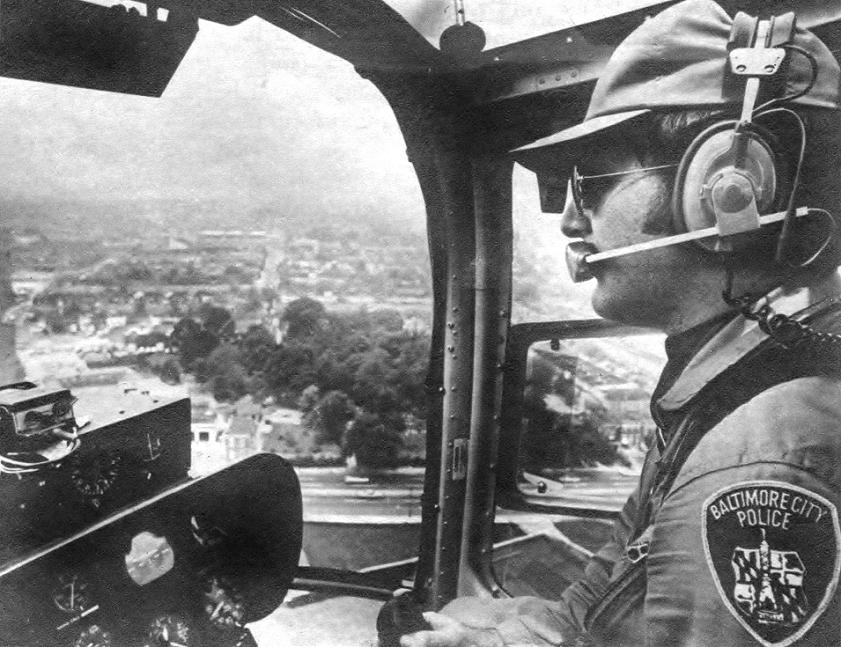
A BIRD'S-EYE VIEW OF STREET CRIME
27 August 1972
Baltimore City Police are approaching crime in the streets from a new angle and some criminals are left wondering how they were spotted on some roof or up a tiny alley The helicopter droned along above the city, the sun was bright and the two men inside squinted against its fierce glare. After several hours on duty, they were fatigued by the cramped accommodations and the endless peering down at the city between their feet.
"Hold it! Let's take a look over there." The aerial observer pointed his finger and the helicopter lurched off in a new direction. The scene below was not unusual but it deserved a closer look. A car was parked in an alley, and three men were moving around it in a suspicious manner. Experienced police officers have a kind of sixth sense about unusual behavior. As the helicopter passed over the alley, the observer touched his radio control.
"This is Foxtrot," he said, and every police car in the city was on instant alert. From his picture window in the sky, the observer was able to locate the nearest cruising police car. The car was advised to proceed to the nearby alley and check out the situation. A few minutes later the ground unit turned into the alley and pulled to a stop in front of the suspicious car. Afterward, the helicopter got a radio report of the action on the ground. As the police car approached, one of the suspects shoved something into the car's glove compartment. It turned out to be a revolver. A second man was wearing a pistol tucked into his belt. The officers arrested all three of the men for possession of deadly weapons, and all of them proved to have extensive records of assault and robbery. The prevention of crime, particular crimes against people, is one of the chief purposes of the l8 month-old helicopter unit. Helicopters are also used to catch fleeing criminals, prevent accidents, spot fires and locate missing objects. The whole story of police helicopters can't be told because it hasn't all happened yet. Yesterday an inmate was talked down from a dangerous perch on the roof of the Maryland Penitentiary. Today a lost child may be found running through the woods of Leakin Park. Tomorrow night a 3.5 million candlepower spotlight may be used to light a street corner where a week ago four pocketbooks were snatched. It all started in l968 when Commissioner Donald D. Pomerleau instigated a 100-hour flight program to determine the feasibility of using helicopters for police work. The test program was called Jaguar for a Joint Air-Ground Unit of Aerial Reconnaissance and it was successful enough to win federal funds for the purchase of Baltimore's first police helicopter. Eventually, Jaguar became today's 11 man, three-ship helicopter unit under the leadership of Sgt. Regis Raffensberger. Sgt. Raffensberger is called the officer in charge, and his background is an indication of the quality of the entire unit. He is a pleasantly handsome, athletically trim, thoroughly competent man with 12years of service with the Police Department. His education includes a college degree with additional post-graduate courses in police management at Northwestern University. His actions in the line of duty have won him four bronze stars, and he is described by his fellow officers as an aggressive policeman with natural leadership qualities. From the beginning, Commissioner Pomerleau deviated from the standard pattern set by the 65 other cities using helicopters to fight crime. Instead of taking experienced policemen and teaching them to fly, Baltimore recruited five military-trained helicopter pilots with at least 1,400 hours flying time and trained them to be police officers. Helicopters are uncomfortable. They wobble and sway. They feel flimsy. For the first few trips it doesn't make much difference to know that they are the only single-engine aircraft considered safe enough to carry the President of the United States, but men who have logged over 1,000 hours of flight in wartime conditions no longer grip their seat when their ship falls in an air pocket. Experienced pilots can make these unique machines fly forward and backward or sideways. A helicopter can go up and down like an elevator, zoom across the sky like a regular aircraft, hover like a bee and land like a bird. Riding beside the pilot on each flight is an aerial observer. Sgt. Raffensberger calls this man the key to the whole operation. Each of the five observers is veteran police officers with no less than nine years of service covering all aspects of police work. Like the pilots, they must weigh less than 180 pounds and pass a rigorous flight physical. Experienced observers can maintain observation from as far as a mile away. "Once a criminal is spotted and he knows it," says Sgt. Raffensberger", "there is a great tendency for him to become transfixed as he sees that helicopter bearing in on him. Sometimes they will run around in circles. One man just turned to stone. He stood in the middle of the street with a stolen wallet in his hand waiting to be arrested. "But they can't escape. If a man crawls into a drain pipe, we're there, waiting with an arresting officer at both ends." The men in the sky are in constant communication with the ground via radio. Each police car with a radio has an identification number on its trunk. If a helicopter spots something that needs investigation, it is a simple matter to find the closest radio car, call out its number and request assistance. Sometimes it is more difficult for the helicopter to identify individual buildings or exact locations. Plans are underway now for banks, hospitals, schools and other public buildings to paint their names and locations on their rooftops. The buzz fuzz would be happy if every building in the city had its address on its roof. Sgt. Raffensberger's office is on the second floor of the old Police building at Fallsway and Fayette Street. His walls are papered with maps and charts. On the window behind his desk sits a radio receiver. He is in the midst of writing a manual on the use of helicopters in police work. "It's unlimited what they can do," he says. "It's really an untried field open to constant appraisal and analysis. The Baltimore City Police Department would like to see every building carry its street name and number on the roof to make it easier for helicopter crews to identify a location of trouble they observe. One day at a Union Trust Company branch in East Baltimore, a teller pushed the alarm button. The communication center at Police Headquarters got the buzz and immediately sent out an alert! We have a hold-up alarm at 1039 East Baltimore Street." Police cars in the immediate area began to respond and the helicopter moved across the city to the scene. As the chopper approached, a man came running out of the bank. Within seconds he was identified as the robber. The men in the sky watched him jump into a waiting car and take off into the midst of busy cross-town traffic. The helicopter followed relentlessly relaying information as to the escape route. When the action reached the center of town, Sgt. Raffensberger looked out of his office window and saw the getaway car, a Lincoln, with the helicopter flying right above it. The car was finally stopped at Cross and Light Streets. Police arrested the thieves, recovered $16,000 in stolen money and confiscated the weapon they were carrying. As Sgt. Raffensberger says, "A sawed-off shotgun can ruin your whole afternoon."

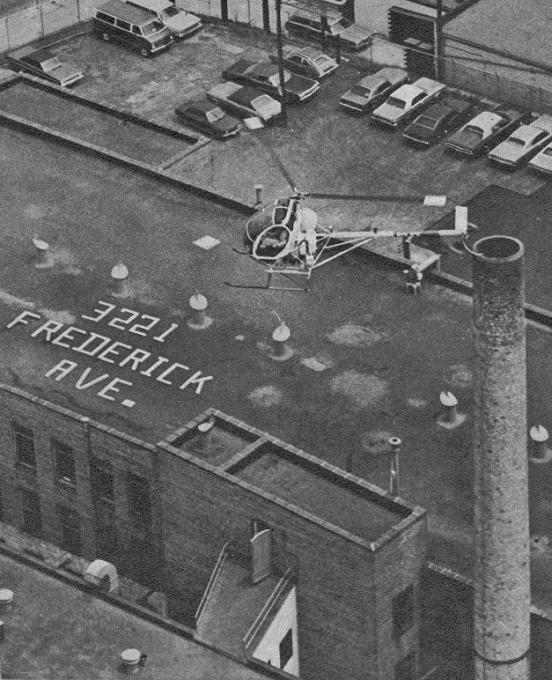

Another First
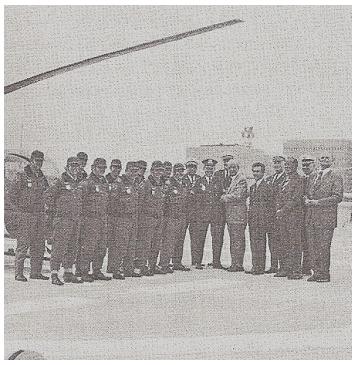
Still another Departmental first took place on Wednesday, October 25, 1972, with the first helicopter landing on the new Headquarters Building roof. The newly functioning Heliport is only the second of its kind located in the city of Baltimore. The first is located atop University Hospital. All three of the Department's helicopters were used during the landing ceremony. They flew a tight V-shaped pattern from their starting point, Pier 4, Pratt Street. Approach to the heliport was made at 2: 00 P.M. With faultless precision, the pilots set each craft down in succession. The first and largest craft disembarked Deputy Commissioner C. Jared Glauser of the Administrative Bureau, who was piloted by Flight Officer Scott Miskimman. After taking off again, the first craft was followed by Flight Officer Henry Lippincott piloting one of the two Hughes 300 C craft. With him was Sergeant Regis Raffensberger, Officer in Charge of the Helicopter Unit. The final touchdown was made by Flight Officer Thomas Howard, with Aerial Observer Weston Bousman. Greeting the craft passengers as they debarked on the new Heliport was Police Commissioner Donald D. Pomerleau, together with members of his Command Staff, and representatives of the local media. The remaining Flight Officers and Aerial Observers of the Helicopter Unit were on hand at the Heliport to take part in the ceremonies.
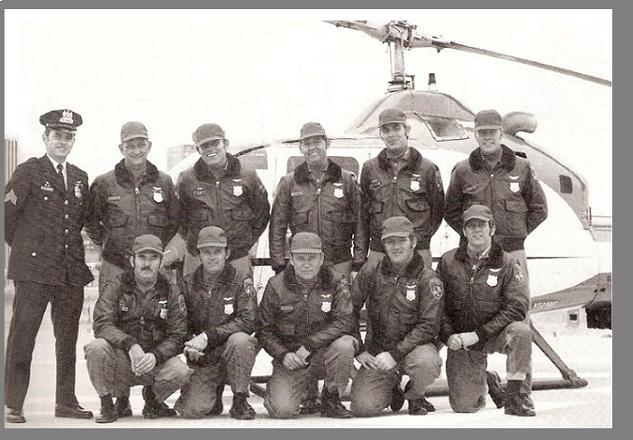
October 1972, First landing on HQ. heliport, Sgt. Regis Raffensberger, Back row: Officers Charlie George, Robert Sharp, J. Davis, Weston Bousman, Barry Wood Front row: R. Smoot, J. Rourke, H. Lippincott, R. Miskimon, T. Howard

Baltimore's Foxtrot
SCHWEIZER 300C TWO-SEAT HELICOPTER

Courtesy Sergeant Jose Rosado

Departmental Helicopter Unit Strengthened
July 1973
Fifty-eight and fifty-nine Foxtrot, the new call-signs being heard on the police radio belong to the two newest additions to the Baltimore Police Department aerial fleet. The newest Hughes 300-C's are on station after being flown, by Department crews, from the Hughes Tool Company plant in Culver City, California. The cross-country flight, supervised by Deputy Commissioner C. Jared Glauser, lasted a week with the aircraft stopping about two dozen times for fuel. Three pilots shared the flying chores hopping to and from such places as Yuma and Gila Bend, Arizona, Deming, New Mexico, Van Horn, Texas, Tuscaloosa, Alabama than through Georgia, South Carolina, North Carolina and Virginia. The pilots were Flight Officers Henry Lippincott, Thomas Howard and Michael Sughrue. The two additions to the Helicopter Unit were financed through the Law Enforcement Assistance Administration and the Governor's Commission for Law Enforcement and the Administration of Justice. The local match to a total of $405,100 in Federal Grants is the service of three pilots and three aerial observers. According to reports from the crews who ferried the aircraft across the United States the flights were normal. One experience which was related was the unusual feeling of flying above an Interstate Highway with a strong headwind and seeing the automobiles below cruising along at a faster rate than the helicopters above.

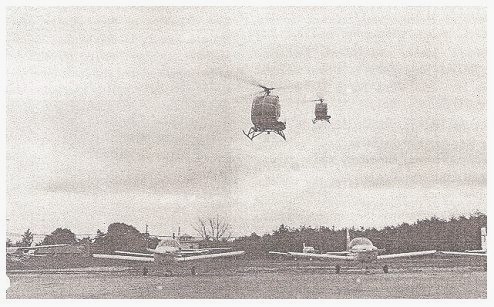
Fifty-eight and Fifty-nine Foxtrot arriving at Friendship International Airport after a cross-country flight from the Hughes Tool Company at Culver City, California




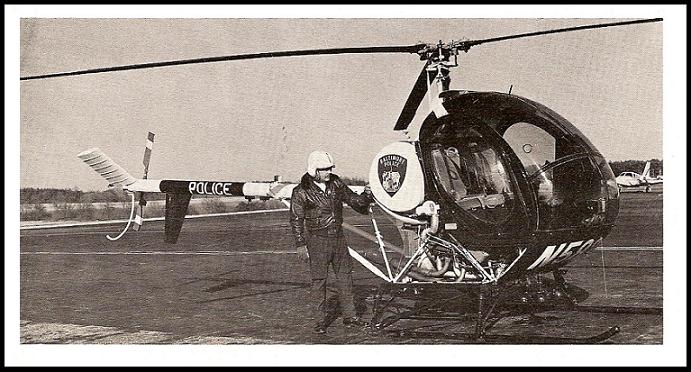
Flight Officer Barry Wood
Flight Officer Barry Wood
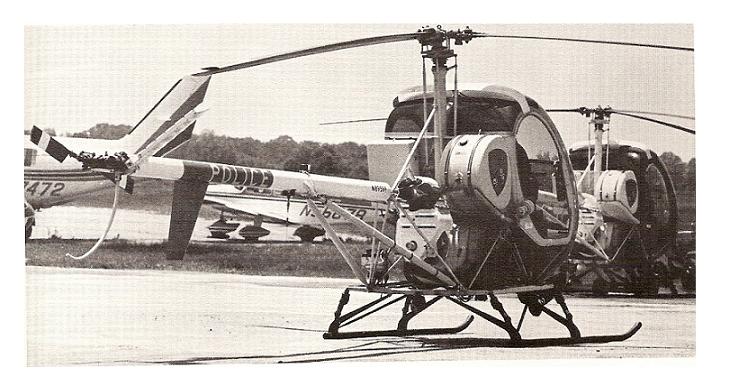

BPD HEADQUARTER'S HELIPORT MAY 10,1973
Lieutenant Regis Raffensberger, Deputy Commissioner Frank Battaglia, Karl Malden (Streets of SanFrancisco)
Flight Officer S. Miskimon, Ariel Observer J. Rorke
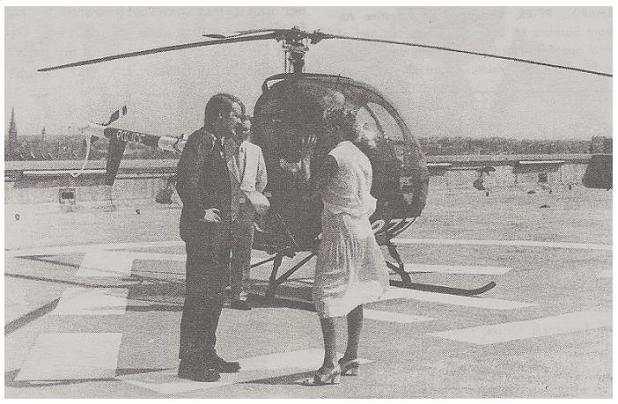
Baltimore Police News Letter
Detective Inspector Sigun Inal was a recent visitor to the Baltimore Police Department. Inspector Inal is a member of the Stockholm, Sweden Police Department and is also a member of the International Police Association, Swedish Section #6. Inspector Inal's escort was Colonel William F. Rochford, Chief of the Criminal Investigation Division. Officer Barry W. Wood, Helicopter Unit (left), discusses the value of Helicopter patrol with Inspector Inal (right) as Colonel Rochford looks on.
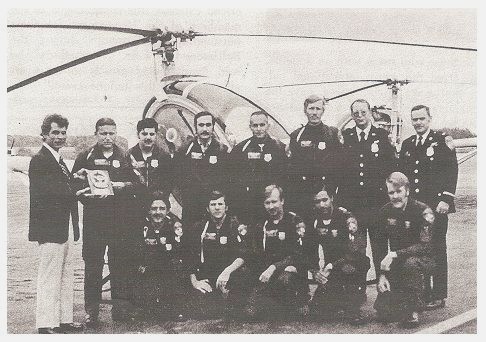
Helicopter Safety Award
September 1975
Deputy Commissioner C. Jared Glauser congratulates members of the Helicopter Unit which received the Helicopter Association of America's Safety Award for logging 13,500 accident-free flight hours. The Helicopter Association, which is composed of both civilian and law enforcement agencies, considered more than 300 member helicopter units before presenting 60 awards to those with the most outstanding safety records

Courtesy Sergeant Jose Rosado
Sketch of the departmental helicopter done by
Sergeant “Buzz” Koerber, Northwestern District.

The Helicopter Unit. . .
The "Leader" In Law Enforcement
March 1976
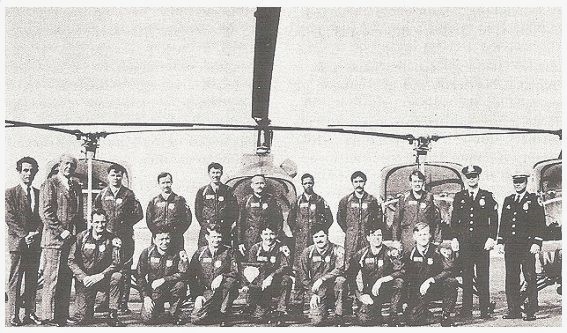
Police Commissioner Donald D. Pomerleau and Deputy Commissioner C. Jared Glauser recently congratulated the members of the Helicopter Unit for their outstanding performance which resulted in two awards from the Helicopter Association of America. The 1975 Safety Award marks almost 16,000 accident-free flight hours. The Hughes Law Enforcement Award, an international honor, is presented to the Agency that contributes most significantly to the success of helicopters in law enforcement. During the Helicopter Association of America's 28th Annual Meeting/Convention held in Tucson, Arizona recently, Lieutenant Regis R. Raffensberger accepted two notable national awards on behalf of the Baltimore Police Department's Helicopter Unit. The 1975 Hughes Law Enforcement Award was presented to the Department for making the most …… worthy contribution to the advancement of the crime suppression concept of the helicopter patrol service." The safety record of the Unit also qualified it for the Helicopter Association of America's 1975 Safety Award.
The ability of helicopters to respond to a call in a matter of minutes and to maintain an aerial view of the area aids greatly in isolating a crime scene, as well as spotting suspects and discovering victims who are in need of assistance. The aerial platform also facilitates the tracking of vehicles wanted by ground units, often eliminating the need for high-speed vehicular chases. During the evening hours, the helicopter's powerful spotlights are greatly appreciated by ground units whenever they request assistance. A request for spotlight illumination was made recently by Northern District Units who were searching for suspects wanted for assault and robbery and attempted rape. They were last seen in Druid Hill Park running towards the Jones Falls Expressway. With the aid of helicopter spotlights, ground units were able to apprehend two of the suspects who were hiding in the area. Weather permitting, "Fox-trot" remains in the skies over Baltimore at least sixteen hours a day. When not responding to calls the members of the Unit maintain a routine patrol mode which has lent itself to spotting hundreds of suspicious, criminal or other dangerous activities. During one such routine patrol, the aerial observer in "Fox·trot" spotted a house fire in the 1400 block of W. Mulberry Street. Knowing that there were no ground units in the immediate area and that such a fire spreads rapidly the officers activated the siren and public address systems on the helicopter. They were able to wake the residents, who were then able to evacuate the burning structure without injury.
Since November 1970, members of the Helicopter Unit have logged more than 15,000 hours of accident-free time which is equivalent to 21 months of continuous flight. The Helicopter Association of America's 1975 Safety Award was presented to the Baltimore Police Department in recognition of this outstanding record. The helicopter's operational and safety achievements, both stem from the unique recruitment and training standards developed and maintained by the Department. The requirements are the most stringent for law enforcement use within the continental United States. Prior to unit placement, each pilot must have logged at least 1400 hours of roto-craft flight time, possess a commercial helicopter license and pass a stringent flight physical. Additionally, each pilot must be a fully trained sworn police officer. The second integral member of the flight team is the aerial observer, who must be thoroughly familiar with the topography of the city in order to assist in navigation and to direct ground units. Three years of patrol experience is considered the minimum standard for these essential duties. While the pilot commands the aircraft and is responsible for its safe operation, the aerial observer carries out the air to ground coordination which results in successful operations. This blend of pilot-observer expertise has enabled the flight team to become a significant, nationally recognized, patrol tool for modern law enforcement. The other essential element for the superior performance is maintained.
These services are provided, on a contract basis, by Chesapeake and Potomac Airways, a nationally recognized leader in the field of helicopter maintenance.

BPD Helicopter Unit Sets National Safety Record
March 1977
The Department's Helicopter Unit recently reached another milestone. On Tuesday, February 22, 1977, at 0145 hours Flight Officer John Rennie and Aerial Observer Gary Mitchell had the distinction of flying the 20,000th hour of accident-free operation. According to Regis R. Raffensberger, Lieutenant-in-Charge of the Unit, this represents the longest continuous accident-free record of any law enforcement aviation unit in the United States.
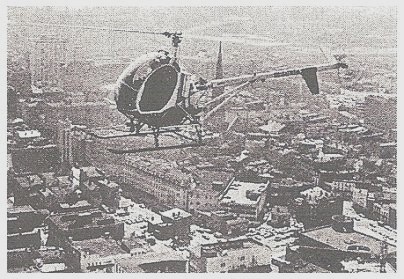
Members of the Helicopter Unit have exceeded 20,000 hours of accident-free flight time. This is believed to be the best law enforcement aviation unit safety record in the nation. Since the activation of the first helicopter on October 23, 1970, the Unit has become a nationally recognized leader in helicopter patrol and was the recipient of the 1975 Hughes Law Enforcement Award for making the most "... .worthy contribution to the advancement of the crime suppression concept of the helicopter patrol service. . ." in the nation. The Unit has also received three Safety Awards from the Helicopter Association of America. During 1975 the Unit responded to 12,892 calls for service and assisted ground units in the arrest of 488 suspects. During 1976 the number of calls, which ranged from isolating a crime scene, spotting suspects to discovering victims who were in need of assistance, increased to 13,261 and the number of assists to ground units in the arrest of suspects rose to 553. This new record of accident· free operation is equivalent to 27 months of continuous flight and is attributable to the unique recruitment and training standards developed and maintained by the Department for both the pilots and aerial observers. In commenting on the safety record, Lieutenant Raffensberger praised the efforts of Chesapeake and Potomac Airways; which, under a contract, provides maintenance for the aircraft. Craftsmen at C & P have also been recognized nationally for the high quality of maintenance services provided.

 Officer Dotty Woods
Officer Dotty Woods
First Female Flight Observer in Baltimore's Fox Trot Unit
Possibly in the State of Maryland says source Baltimore Sun
20 March 1975
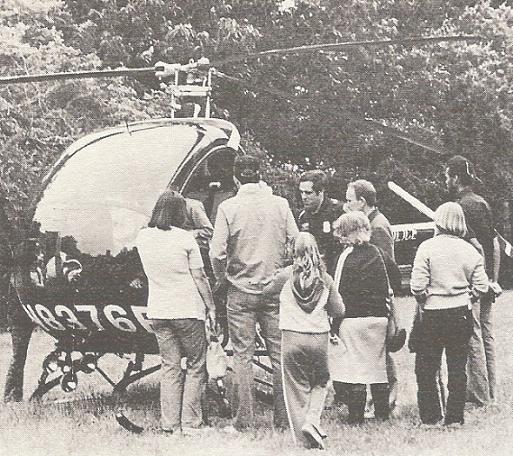
HELICOPTER ON DISPLAY AT THE CITY FAIR 1979

Officer John W. Rennie, a Helicopter Unit pilot, stands beside 96 Foxtrot, one of two new helicopters soon to be in the air over Baltimore.
Major Regis Raffensberger, commander of the Aviation Unit receiving an award from President Ronald Regan

Photo courtesy Agent Robert Jud
Zack Jud, son of Sergeant Robert Jud, is being given a hands-on look of the" Foxtrot" helicopter by the Flight Officer and aerial observer and he appears to be enjoying the experience.

COURTESY OFFICER NORMAN JACKSON
February 7, 1985, Flight Officer Douglas Womack, who was the first Flight Officer to be promoted to sergeant, and Aerial Observer Norman Jackson prevent a man from jumping off the Shot Tower in downtown Baltimore. Both Officers received the Bronze Star for their heroic actions that day Below Aerial Observer, Officer Norman Jackson instructs Mayor Kurt Schmoke on safety before taking off from the heliport above the Baltimore Police Headquarters building. Doug Womack was the pilot and saw that the Mayor was visibly shaken by the prospect of his first ride in "FOXTROT" so he leaned over to him and said, Mayor, excuse my french but right now, this helicopter is strapped to your ass, and it isn't going anywhere. He laughed and was much more at ease. When Doug told some of the bosses about it, they weren't sure how to take it. Later the Mayor sent a note through the chain of command thanking him for the flight and for the "words of encouragement"
January 31, 1986, Flight Officer Barry Wood was in command of the "Foxtrot" helicopter on routine patrol over the city and developed a mechanical problem with the ship. His vast knowledge of helicopters and in the interest of safety he searched for the closest area to land. Looking down he saw a clear spot on Frankford Ave between Moravia Park Primary and the Frankford Elementary Schools. He checked the area for any persons on the ground and for any hazards that could affect the landing. He notified the Communications Division about the need to bring the helicopter down. Communications Division immediately notified ground units to respond and secure the area along with the Baltimore Fire Department to be on the scene if needed. Officer Wood brought the helicopter down safely without any injuries or damage to the helicopter.
In 1998, twelve years later, he developed another severe mechanical problem with one of the department's helicopters that took his life. As in this earlier incident, using his experience and training he tried to bring the ship down without any injury to persons on the ground. He was able to bring the helicopter down on a clear lot and positioned the helicopter to crash on his side as not to injure the Ariel observer to severely. The observer sustained some major injuries however not life-threatening. Baltimore Police lost one of their very best that day.
 10-50 RED
10-50 RED
The National Transportation Safety Board (NTSB) has ruled that the November 1998 helicopter crash that killed city police Officer Barry Wood was caused by an improperly assembled engine, made by replacement workers for engine manufacturer Textron Lycoming during a strike at its plant. The federal agency also found a separate faulty repair by Helicopter Transport Services Inc. (HTSI), the company that leased the aircraft to the city and, according to NTSB, installed one of the engine's cylinders backward. NTSB does not list this as a contributing factor in the crash, but its report indicates that the improper installation had damaged the engine, and an independent aviation expert who reviewed the relevant portions of the report contends the error would have likely caused the engine to fail eventually.
The helicopter unit has been grounded since the Nov. 4, 1998 crash. Earlier this month, HTSI filed a lawsuit claiming that the city reneged on the final year of its three-year contract with the firm, which expired in July 1999. According to NTSB, workers at Textron Lycoming's Williamsport, Pa., factory failed to properly stretch a bolt holding a connecting rod inside the engine's number-two cylinder. As a result, the bolt lacked the flexibility to move with the rod. The bolt snapped after approximately 46 hours of flight time, throwing the rod through the engine as Wood piloted the chopper, popularly known as "Foxtrot," about 400 feet above Southwest Baltimore while helping officers on the ground look for a suspicious car. The engine immediately failed, sending the helicopter crashing into Pratt Street. It slammed into a wrought-iron fence outside the B&O Railroad Museum, killing Wood; the other officer in the aircraft, Mark Keller, was critically injured.
The engine was manufactured in February 1998, shortly before the end of a seven-month strike at the Williamsport plant. Textron Lycoming used a recruitment company to hire replacements. Early in the strike, according to the NTSB report, Textron "specified that all replacement workers have mechanics' certificates," but that requirement was dropped "[a]s the strike continued, and the available pool of applicants decreased." Company records attached to the NTSB report show that before they were hired by Textron Lycoming neither of the two employees involved in the rod assembly had any experience assembling aircraft. One of the workers received only one week of training, from another worker who had been hired to fill in during the strike. Textron Lycoming officials did not return phone calls seeking comment on the NTSB findings.
Federal investigators also found a problem with the number-one cylinder, which they attributed to HTSI, the company that took over ownership of the police department's Schweizer 269C helicopters in 1996. Previously, the city had owned the aircraft and contracted with HTSI, which has offices in Middle River, for maintenance. When that contract expired in 1996, HTSI declined to renew it unless it was allowed to purchase the choppers, which the city has since leased on a per-flight-hour basis. NTSB reported that in October 1998 HTSI replaced the number-one cylinder in the engine of the aircraft that crashed the following month. The agency found that the cylinder was placed into the engine backward, with two valves inside the cylinder reversed. NTSB also found that the company did not document or keep records on the change, as required by the Federal Aviation Administration (FAA).
Michael Hynes, director of aviation research at Western Oklahoma State College, says the two valves are different sizes and are made of different materials. Thus, if reversed, "they don't fit correctly," he says. Hynes--a former pilot examiner for the FAA who has flown 16,000 hours and once owned a helicopter-manufacturing plant--says that as a result of the manufacturing error, it's likely the engine "never produced the proper power." He notes that the NTSB report, while not citing the improper installation as a factor in the fatal crash, does state that several parts of the cylinder were already damaged prior to the accident. "The engine had around 46 hours on it when it crashed?" Hynes said when apprised of the figure during an interview. "I'm surprised there wasn't a problem before that."
According to Wood's daily flight/maintenance log, which is cited in the report, there was a problem, one week before the crash--when the engine had logged only 17 flight hours. In his Oct. 28 report, Wood noted, "A/C [aircraft] has mid freq[uency] vib[ration]s at all power settings. Increases as additional power was applied. Vibs felt in controls and seat. . . . Uses 13 gallons per hr. when flown predominantly at Econo cruise settings." Hynes said normal fuel usage is closer to 10 or 11 gallons per hour. HTSI replaced the craft's fuel servo--a device Hynes likens to a car's gas pedal--which Hynes says "might address the fuel-consumption problem" but would not have fixed the vibration. "The vibration was certainly caused by" the incorrectly installed cylinder, he says. Lawyers for HTSI did not return repeated calls for comment.
HTSI's lawsuit, filed July 7 in Baltimore County Circuit Court, seeks $600,000 in damages because the city stopped payments under its contract with the firm after Foxtrot was grounded. In the suit, HTSI claims that the payments were guaranteed under the contract, whether the police choppers were flown or not. (The city did pay HTSI $132,000 during 1999 for the training of pilots on helicopters other than the Schweizers, according to an invoice included in the court records. That payment covered 218 hours of flight time--a rate of $607 per hour, compared to the $241.80 per hour the city was paying to fly the Schweizers.) Sean Malone, the department's top lawyer, says the city had no choice but to cease helicopter flights. "After Officer Wood's crash it would be extreme negligence on our part" to continue flying, he says. "We look forward to defending this action before a jury," Malone says the department is weighing a counter-suit against HTSI but has not taken any action yet.
The police department is aiming to get Foxtrot back in the air on at least a part-time basis around Oct. 1, says Maj. Russell Shea, head of the Tactical Division, which includes the helicopter unit. Shea says the city intends to buy, own, and operate its own helicopters, as it did before 1996. Additionally, he says, the city will get its own hangar at Martin State Airport and hire its own mechanics so as not to have to depend on outside contractors for maintenance. Shea says the unit's three current pilots will start with test flights at the end of July to determine which aircraft the city will buy. He says the department plans to purchase five helicopters over the course of several years and employ eight full-time pilots, to bring the unit back to the strength it had before it was downsized under former Police Commissioner Thomas Frazier. Foxtrot pilots likely will once again be military veterans, like Barry Wood, because the department is looking for pilots with at least 1,400 hours of helicopter flight time
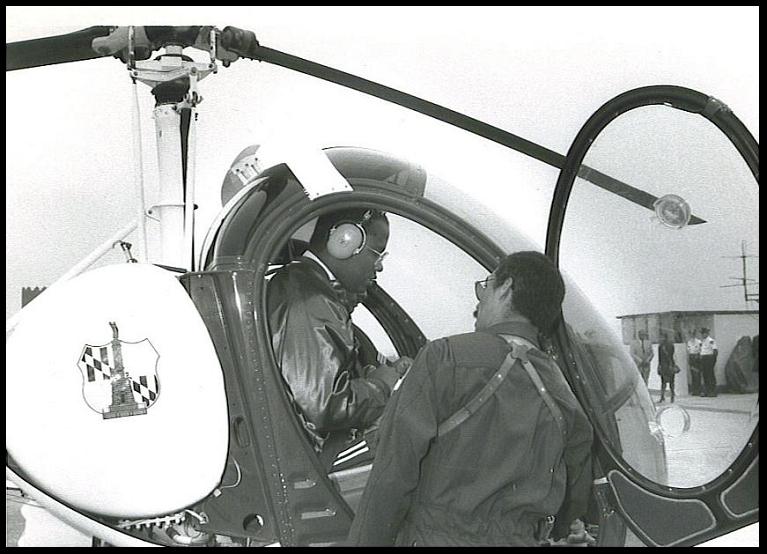
COURTESY OFFICER NORMAN JACKSON
RIP Norm (To know you were to love you - I don't think you had an enemy in the world)
10-50 RED FOXTROT DOWN
Aug.12,1995 19:04hrs.
Easterwood Park
Baker & Bentalow Sts.
Flight Officer and observer received non-life threatening injuries.
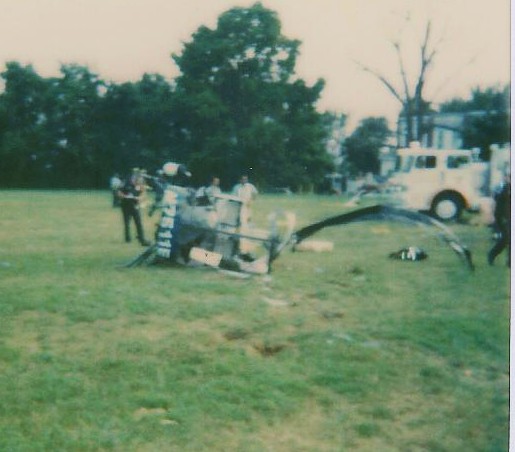
Photo courtesy Officer Brian Weber

Flight Officer Barry Wood
10-50 Red
Flight Officer Bill Force
Left the BPD and joined the MSP.
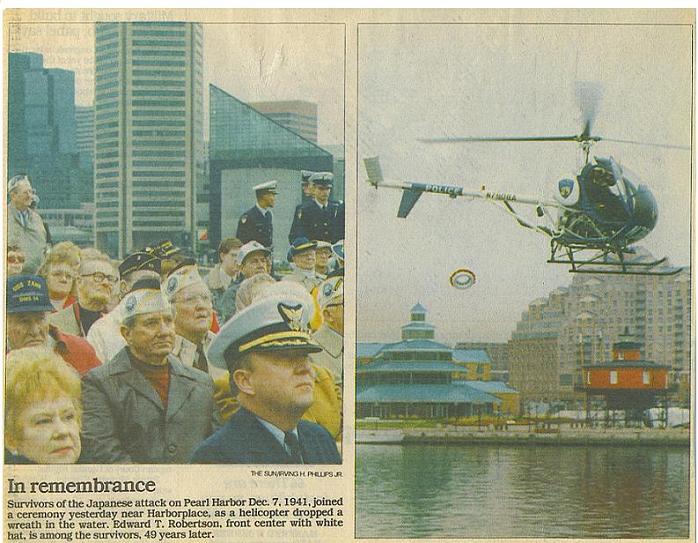
COURTESY OFFICER NORMAN JACKSON
Baltimore Police Helicopter “Foxtrot” dropping a memorial wreath in the Inner Harbor during a Pearl Harbor Memorial Service.
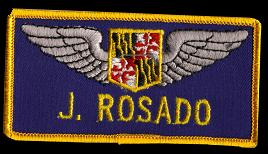
Courtesy Sergeant Jose Rosado
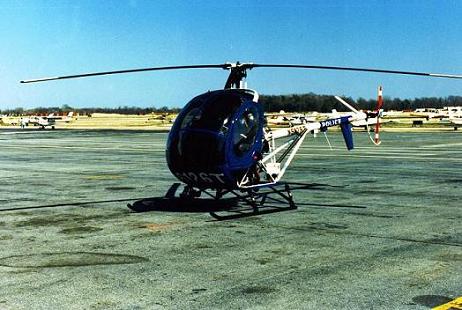
Photo courtesy Officer Herb Moseley
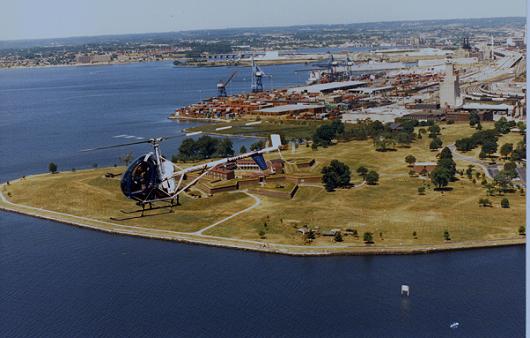
Photo courtesy Officer Herb Moseley

Photo courtesy Officer Herb Moseley
Photo courtesy Officer Herb Moseley
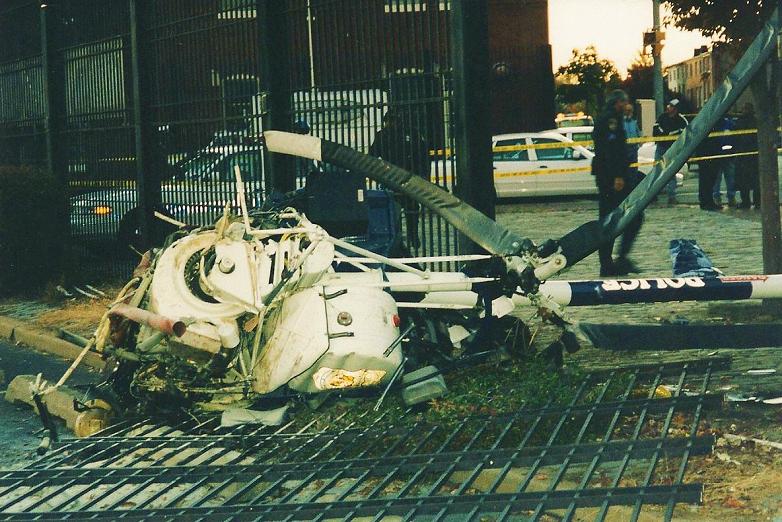
Photo courtesy Officer Brian Weber
November 4, 1998 crash site of a Baltimore Police helicopter
The crash landing took place in the parking lot of the B&O Railroad Museum on W. Pratt St.
Flight Officer Barry W Wood
November 4, 1998, a Baltimore Police helicopter piloted by Flight Officer Barry W. Wood experienced mechanical problems while chasing down a car thief, and crashed into the parking lot at the B&O Railroad Museum on West Pratt St. According to witnesses, a loud bang came from the helicopter and plumes of smoke were seen pouring out the back. Remaining calm and courageous until the end, Officer Wood dispatched a distress signal over his radio, declaring "10-50 RED, 10-50 RED" which indicates that a crash is imminent. Then, the former Vietnam War Pilot, did all he could to maneuver his aircraft away from people on the ground. There were more than 60 people inside the museum at the time of the crash. A ten-year-old boy playing near the accident site said " It was coming down with smoke. When I saw it hit the gate, I ran because I was so scared." Fortunately, no one on the ground was hurt. On the way down, the helicopter struck a light pole and then crashed through an iron fence in the museum parking lot before coming to a rest on its side. The cockpit was destroyed. The two Officers were immediately removed from the helicopter and rushed to Shock Trauma Center. Flight Officer Wood,50, made it into surgery but was pronounced dead at 5 p.m., less than three hours after the accident. Officer Keller,43, suffered a number of serious injuries, including a broken elbow and a spinal fracture, but survived the accident. At the funeral, Barry was compared to "David, the Warrior," a Biblical figure who was renowned for the love, compassion, and strength of character he exemplified. Officer Wood's wife of 28 years, Martha, spoke eloquently and powerfully at the funeral. She praised her husband as a great planner and excellent provider and talked about the special relationship they had. "No one on earth has ever experienced the love that Barry and I shared. He was a loving, caring man who touched everyone that he came in contact with" Officer Keller expressed great admiration for his partner of more than a year and a half when he said, "Barry laid down his life for a friend. Our family will always love him and so will I." Officer Barry Wood's Service, Dedication to Duty, and Compassion Honored the City of Baltimore and the Police Department
A Man Who Loved To Fly
If your thoughts go to him and they go sad
Just remember this,
He has no barriers anymore,
For now, the clouds aren’t closed doors.
He has no limits
It does not matter how high he flies.
The Good Lord has set him free.
And remember this, if it is a shooting star you see,
Think of him and you will know
That his heart and soul will never die,
For he now lives in the sky,
What a wondrous thing for a man who loved to fly.
Dedicated to Flight Officer Barry Wood, passed away on November 4, 1998, protecting the City Of Baltimore and doing what he loved to do, Flying……
Thank You & God Bless You
By: Suzanne M. Jones
Age: 14
November 7, 1998
PLEASE KEEP OFFICER & MRS. WOOD AND ALL OF THE FALLEN OFFICERS OF THIS DEPARTMENT IN YOUR THOUGHTS AND PRAYERS.
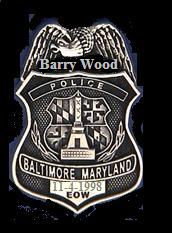

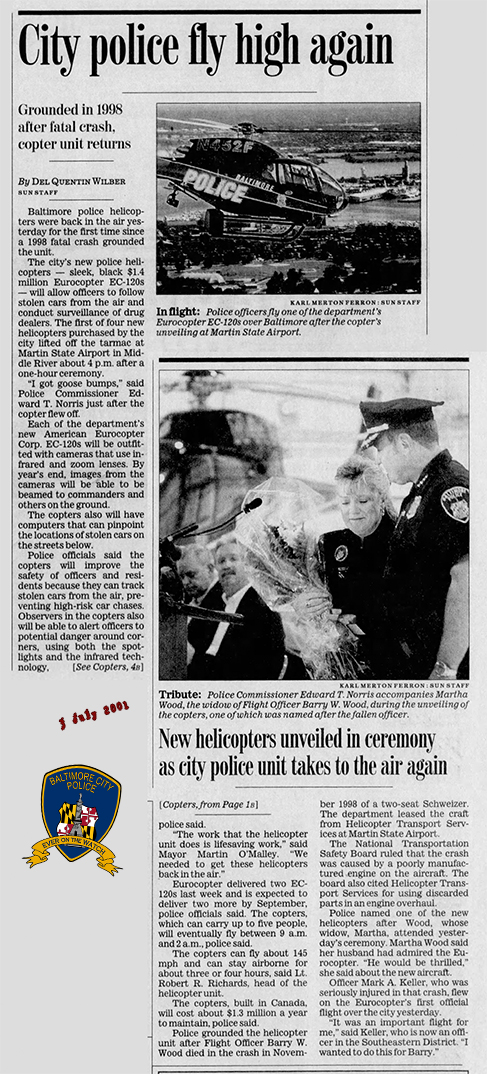
3 July 2001

June 27, 2006, A SED unit spotted a suspicious vehicle around 0100 hrs., and when he attempted to make a routine car stop and the vehicle sped off turning into a high-speed chase that went into Baltimore County. The chase ended on a dead end street and the occupants bailed out of the vehicle and ran into a wooded area and a swampy marsh. City officers pursued the fleeing suspects on one side of the swamp area while Baltimore County Police officers went to the opposite side of the area to catch them as they attempted to escape. While in the area Baltimore County officers on foot became stuck in the mud, drawing them in deeper. Foxtrot spotted the suspects and the City officers made the arrest. Foxtrot was then sent to assist the County police officers who were in extreme danger of being sucked into the mud. The BPD crew of Foxtrot did an outstanding job rescuing the officer stuck in the mud using a never tried before rescue tactic. Click on the link below to see a recreation by the TV show Rescue 911.
Rescue 911 Episode 108 "Police Quagmire"
THE CURRENT HELICOPTER
Eurocopter EC120b
Re-introduced 2 July 2001
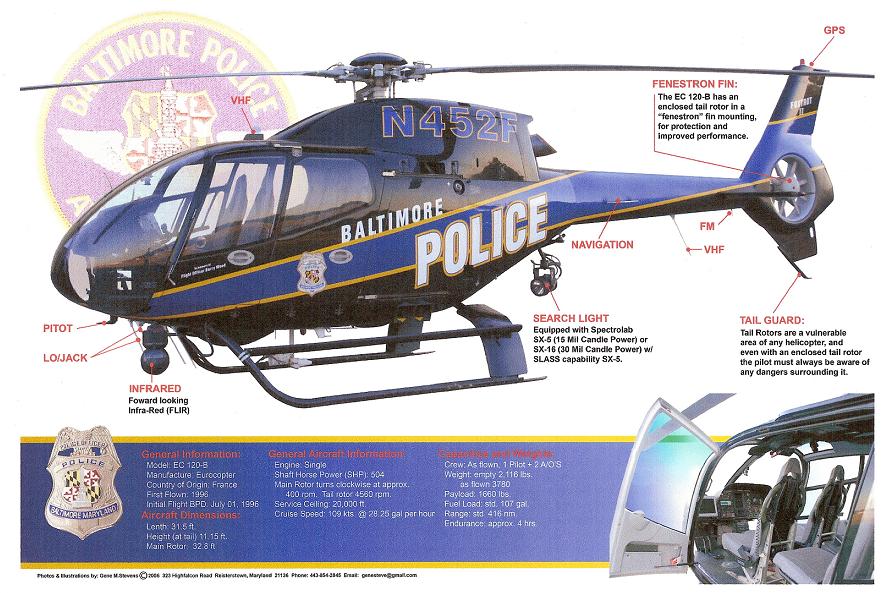
Courtesy Gene Stevens Tel: 443-854-2845 Gene Stevens has done an outstanding job in the production of this poster size 24” X 18” Showing the specifications of the Department’s new EUROCOPTER Model EC-120-B contact him if you have an interest in this fine poster. E-Mail gene @ This email address is being protected from spambots. You need JavaScript enabled to view it.
Martha Woods standing in front of the new helicopter dedicated to her husband "BARRY"
Dear Police Officers and Firemen of the Honor Guard, The first Friday of May is set aside to honor our Fallen Heroes of Maryland. I have been attending this very solemn service for nine years. This day survivors, friends, fellow Police Officers, and Firemen come together to meet, exchange stories of our Fallen and give support to one another. As a survivor, my spirit is lifted when I see the number of people that have not forgotten our Fallen Heroes. A simple greeting to an emotional hug helps heal the hurt of our loss. May 1, 2009, came with a dismal rainy day, a day much like the day of Barry’s funeral November 1998. I watched the Honor Guard march into the formation as the rain started. The “Honor” in Honor Guard was truly shown by all the Officers and Firemen standing in statuesque formation holding your heads high and proud to honor our Fallen. My heart and spirit were full of gratitude for the men and women of the Honor Guard Units. The commitment these Officers possess is so special to survivors, friends, and fellow Officers. Please know that even though with your rained soaked uniforms and dripping hats you all still looked sharp! I feel in my heart that our Fallen Heroes were smiling down with great pride and Thanks. May God’s light always surround and protect you, Martha G. Wood, surviving spouse of Flight Officer Barry W. Wood, BPD e.o.w 11/04/1998
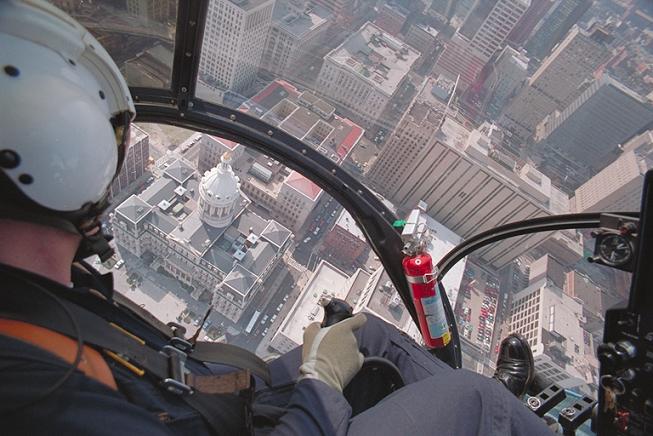
View of City Hall 1970's from Baltimore Police Helicopter Foxtrot
Baltimore Police helicopter flies over the inner harbor 1970's
Before the development of the inner harbor
Fly by of Fort McHenry 1970's Baltimore Police Helicopter "Foxtrot"
Bird's eye view of Memorial Stadium 1970's as seen from the Baltimore Police Helicopter

The photo was taken by Bob Smith BPD PHOTO UNIT Supervisor
Baltimore Police Helicopter flying high above the new Oriole Park at Camden Yards Opening Day
April 3, 1992.
Notice opening ribbon across the infield
Excellent demonstration of "FLIR" (Forward Looking InfraRed) equipped on a helicopter owned by the Brevard County, Florida Sheriff’s Office Aviation Unit Click on the word "FLIR" (below) and watch as the Brevard Co., Fla. Sheriff's Office follows and apprehend several suspects in total darkness. See how the suspects actually light up and the crew of the helicopter can direct the ground units to where they are hiding. ( Note: remember to click on the back arrow to return to this site )

Patrolling the Streets of Baltimore from Above
A Fleet of Foxtrot Helicopters Fight Crime from the Skies
The Baltimore City Police Department and the officers on the ground it protects, it's known as Foxtrot -- or, more affectionately, "Fox." Foxtrot (the odd name comes from the letters on the aircraft's tail) is actually a fleet of four identical helicopters belonging to the Baltimore City Police Aviation Unit. These American Eurocopter EC120Bs are based at Martin State Airport, two miles east of Baltimore. While one flies, another stands by on the ground. A third is kept in reserve, and the fourth is usually being maintained. Up close, the four helicopters look like something out of Star Trek. The EC120Bs carry high-powered video cameras and heat-sensing Forward-Looking Infra-Red units, which can track a hidden suspect or find a gun that's just been fired. Foxtrot navigates with GPS maps so advanced, pilots know who lives at the address below the helicopter. Foxtrot also carries a LoJack device to work with undercover detectives to track car thieves by air, avoiding dangerous, high-speed car chases. But Foxtrot's most visible feature is its spotlight. Between 15 and 60 million candlepower, these searchlights are 200,000 times stronger than an ordinary light bulb. Searchlights allow Foxtrot to conduct search and rescue operations, track fleeing suspects and break up drug activity on street corners. The helicopters also perform homeland security tasks, patrolling possible targets in the Baltimore area. One dramatic yet relatively obscure success for Foxtrot occurred in the fall of 2002. During their three-week killing spree, the D.C. snipers, John Allen Muhammad and Lee Boyd Malvo, actually came to Baltimore. They stopped at a gas station on Remington Avenue. According to Malvo's confession, he was preparing to shoot a pregnant woman when something changed his mind. It was Foxtrot. The low-flying helicopter convinced the sniper he was under surveillance, and he backed off. A Baltimore police officer then stopped them, and his description of the vehicle later led to the snipers' arrest. When Malvo assumed Foxtrot was watching, he was probably right. The helicopter crews include three officers, a pilot, and two observers. These are experienced patrol officers, according to Sgt. Tom Poffenbarger, the acting commander of the Aviation Unit. "They know, looking at a corner if you have drug activity. They know the workings of the street. They're just 500 feet above it," he said. Over Charles Village, for example, Foxtrot patrols high-crime areas, such as the park below Art Museum Drive. The flight officers also work to deter break-ins before they happen. "We look for guys with shopping carts in alleys," said Poffenbarger. Police officers have been flying over Baltimore since 1970, but Foxtrot's 35-year history has not been perfect. In 1992, a crash caused by faulty contractor maintenance injured two officers. Still, Foxtrot stayed in the air until 1998, when a second crash killed Officer Barry Wood and grounded the program. The investigation found that the helicopter's engine had been installed by non-union labor.
Between 1998 and 2001, Foxtrot did not operate. After that, city officials were able to raise $11.2 million to resurrect Foxtrot. They bought a hangar at Martin Airport, installed a maintenance facility, and along with $6.3 million in replacement parts, purchased four new EC120Bs. The new aircraft was bigger, faster and safer. And city employees would maintain them, so there were no more contractors. However, some still question whether expensive helicopters are necessary for a city where almost 25 percent of citizens live below the poverty line. The Airborne Law Enforcement Association (ALEA), a nonprofit that promotes police aircraft, responds to such concerns on its Web site. "One of the first questions asked is, 'Can we afford it?' But the question that should be asked is, 'Can we afford not to?'" ALEA points out that lawsuits brought after police accidents often cost much more than the helicopters which could have prevented them. High-speed police chase frequently causes serious property damage and injury to innocent bystanders. Cost-effectiveness and safety are paramount to Foxtrot. The maintenance facility has been designated as an FAA Repair Center. According to Avionics Technician August Walter, a three-year veteran of the Foxtrot team, this "allows us to do deeper maintenance instead of farming it out." Commercial upgrades to the microwave units, for example, would have cost the city around $80,000 and required the helicopters be sent as far as Tennessee. Foxtrot's maintenance crew was able to do it themselves, at no additional cost. As Walter said, "Our comfort level saves the city money." Why haven't Foxtrot's successes, such as the one against the sniper, been better publicized? Poffenbarger shrugs. "We don't like to toot our own horn."


Photo courtesy Flight Officer Renonzo Belcher
Flight Officer Renonzo Belcher
Photo courtesy Flight Officer Renonzo Belcher
Flight Officer Renonzo Belcher
Photo courtesy Flight Officer Renonzo Belcher
Photo courtesy Officer Bill Shiflett
Officer Bill Shiflett
October 23, 2008, Baltimore Police "FOXTROT" helicopter struck a seagull causing considerable damage to the aircraft. The pilot, Flight Officer Floyd Werner, was able to land safely and no one aboard was injured but near everyone was covered with blood from the seagull.
View from inside the helicopter


Courtesy Mrs. Martha Wood
Officer William Hackley and his wife Donna
10th. anniversary memorial for Barry Wood.
November 2008


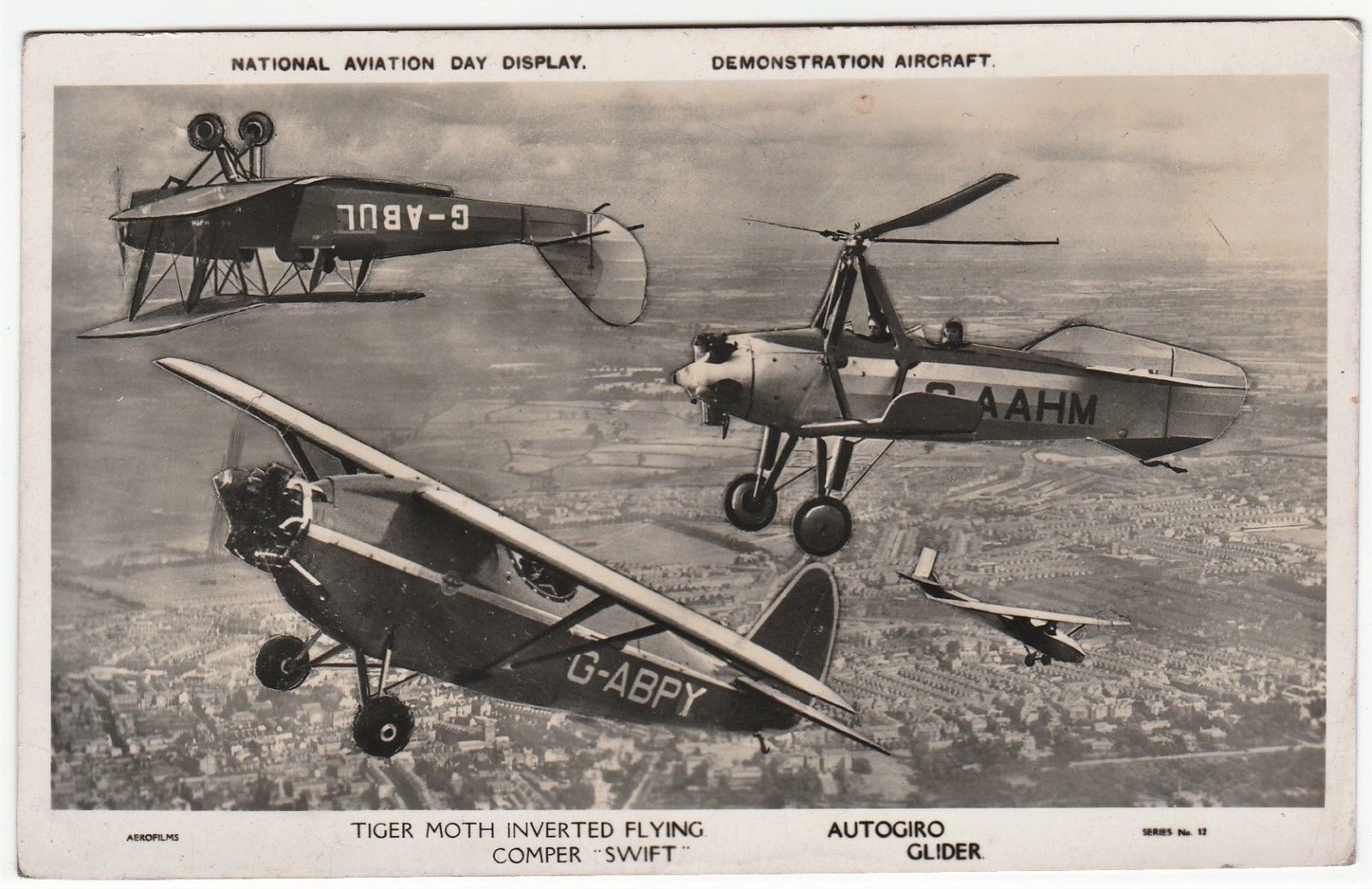
5 December 1924
PLANS AIRPLANE POLICE FOR CITY IF ALL IS PASSED
GAITHER WOULD ASK APPROPRIATION TO BUY SWIFT CRAFT
SEES FLYING OFFICERS NEEDED IN VIOLATIONS
Necessary to Ascertain Altitude of Possible Offenders, He Says.
Baltimore will soon have an Arial police force to arrest aviators violating the proposed airplane ordinance if the plans of police Commissioner Charles D. Gaither mature. Mr. Gaither said today that it will be impossible to enforce the proposed ordinance without one or two airplanes, in which flying policeman may chase any aviators who fly too low over Baltimore or who scatter advertised matter from their planes.
To Ask Appropriation
He said that if the ordinance is passed he will go before the board of estimates and ask a special appropriation for next year, out of which the department may purchase one or two Swift airplanes. Mr. Gaither today received a copy of the ordinance drafted by Howard Bryant, Pres. of the city Council, which will soon be introduced into that body. He said that it met with his full approval, and that he would notify Mr. Bryant to this effect.
Promises Equipment
“The police department will have to have the proper equipment to enforce this ordinance if it is passed.” He said. “I mean by this that we will have to have one or two airplanes. “We have no funds for this purpose in our 1925 budget, and I still have to go before the board of estimates if the ordinance is passed and asked a special appropriation for this purpose.
Can Find Pilots, He Says
“I think we can find the men to pilot the airplanes in this department,” he continued. “Many of our men have had more experience, and I think we can find some of them who are pilots.” Commissioner Gaither then gave his reasons for believing that the ordinance could not be properly enforced without a squad of “flying cops.” He said that although a man on the ground, equipped with fuel glasses, might be able to identify an airplane breaking the proposed ordinance and later arrest him, that it would be impossible for anyone on the ground to estimate accurately the altitude of a flyer.
Would Band Low-Flying
The proposed airplane ordinance prohibits any aviator from flying over Baltimore at an altitude less than 3000 feet, unless he is taking off from a field near Baltimore or about the land near the city.
Council Forecast Passage
Statements by members of the city Council today forecast the passage of the ordinance without much opposition. Members interviewed were unanimous in declaring that the time had come to fix safety regulations for passage of airplanes and later than air crafts over the city. None for salt any opposition to the measure. Councilman Ambrose’s J. Kennedy, member from the second district, declared:
View of A. J. Kennedy
“I shall support Mr. Bryan’s ordinance and work for its passage. Commercial aviation has not reached the point where some regulation of its activities is needed. I think however, that flying by government machines should be exempted from the regulation. I do not believe aviators should be permitted to through handbills down on the city from their machines. “There is a danger of fire. Some of the advertising material also may land in the face of a person driving an automobile, and cause an accident through obstruction of the driver’s vision for a moment.”
Cites Meet Mishap
Councilman John C. Huthwelker, of the first district, supported his colleagues view. He cited an accident that occurred during an aviation meet at Patterson Park some years ago as proof that regulation is needed. “The activities of commercial flyers should certainly be under regulation.” Said Councilman Huthwelker. “The provision of the ordinance which requires that a permit be obtained from the mayor for commercial flying is a good one. This control should either be in his hands or in the police commissioners. There is entirely too much stunt flying over parks and other public places in the city, and in coming years there will probably be a number of young men who will buy and fly airplanes for pleasure. For these reasons some form of regulation or air traffic has come to be necessary.”

The Following Pics came to us Courtesy of retired Lieutenant Robert Wilson









6 December 1924
AERIAL POLICE PLAN USELESS TIPTON THINKS
N. G. Air Service Chief Points to The Difficulty of Enforce and Ordinance
Commander Favors Congressional Act
Approved Law Prohibiting Flying Over Baltimore Stadium
Creation of an aerial police force for Baltimore, as suggested by Charles D. Gaither, Commissioner of Baltimore’s police department, provided the proposed ordinance regulating airplanes is enacted by the City Council, would not aid effectively in the enforcement of the ordinance, Major William D. Tipton, commanding officer of the 29th Division Air Force, Maryland National Guard, said last night. “Aerial police would have to be in the air constantly,” Major Tipton declared. “How would they be able to catch a possible offender flying over Baltimore unless they were? It is impossible to take off from the ground in a few seconds. The motor must be warmed, and usually it takes from 5 to 10 minutes to get into action. By that time offender could be miles away.
Favors Congressional Action
“It is the opinion of many who have given the matter sincere consideration that it is far better to await congressional action on air regulations for the entire country.
“If every city passes laws regulating air traffic the result would be a patchwork. I understand many of the cities are delaying passage of such ordinances until Congress acts.”
England, Germany and France, he asserted, prohibit low-flying over cities and they accomplish their end without the aid of aerial police. A bill for the regulation of airplanes now is before Congress, he explained. It provides for inspection of planes, licensing of pilots, marking of the wings of the planes so as to identify them regularly and regulates flying over congested areas.
Cites Army Regulations
Asked how the proposed city ordinance would affect plans on the air service of the Maryland National Guard, Major Tipton said, “It would have no effect.”
“Our standing orders are that none of our planes shall leave a certain designated area bounded on the north by Eastern Avenue and on the west by Sparrows Point Bay Shore Car Line.”
If at any time the National Guard planes must fly outside that area on business connected with the Army, he explained, they will be governed by Army regulations. In this connection, he added, army regulations provide that no airplane shall fly at an altitude lower than that which will allow a safe glide outside of congested areas with a dead engine.
Major Tipton said he thought it proper to enact an ordinance prohibiting flying over the Baltimore Stadium.

Donations
Donations help with web hosting, stamps and materials and the cost of keeping the website online. Thank you so much for helping BCPH.


POLICE INFORMATION
Copies of: Your Baltimore Police Department Class Photo, Pictures of our Officers, Vehicles, Equipment, Newspaper Articles relating to our department and or officers, Old Departmental Newsletters, Lookouts, Wanted Posters, and or Brochures. Information on Deceased Officers and anything that may help Preserve the History and Proud Traditions of this agency. Please contact Retired Detective Kenny Driscoll.
This email address is being protected from spambots. You need JavaScript enabled to view it.

NOTICE
How to Dispose of Old Police Items
Please contact Det. Ret. Kenny Driscoll if you have any pictures of you or your family members and wish them remembered here on this tribute site to Honor the fine men and women who have served with Honor and Distinction at the Baltimore Police Department. Anyone with information, photographs, memorabilia, or other "Baltimore City Police" items can contact Ret. Det. Kenny Driscoll at This email address is being protected from spambots. You need JavaScript enabled to view it. follow us on Twitter @BaltoPoliceHist or like us on Facebook or mail pics to 8138 Dundalk Ave. Baltimore Md. 21222
Copyright © 2002 Baltimore City Police History - Ret Det Kenny Driscoll












 Star Spangled Banner 2014
Star Spangled Banner 2014  Star Spangled Banner 2014
Star Spangled Banner 2014  Star Spangled Banner 2014
Star Spangled Banner 2014










